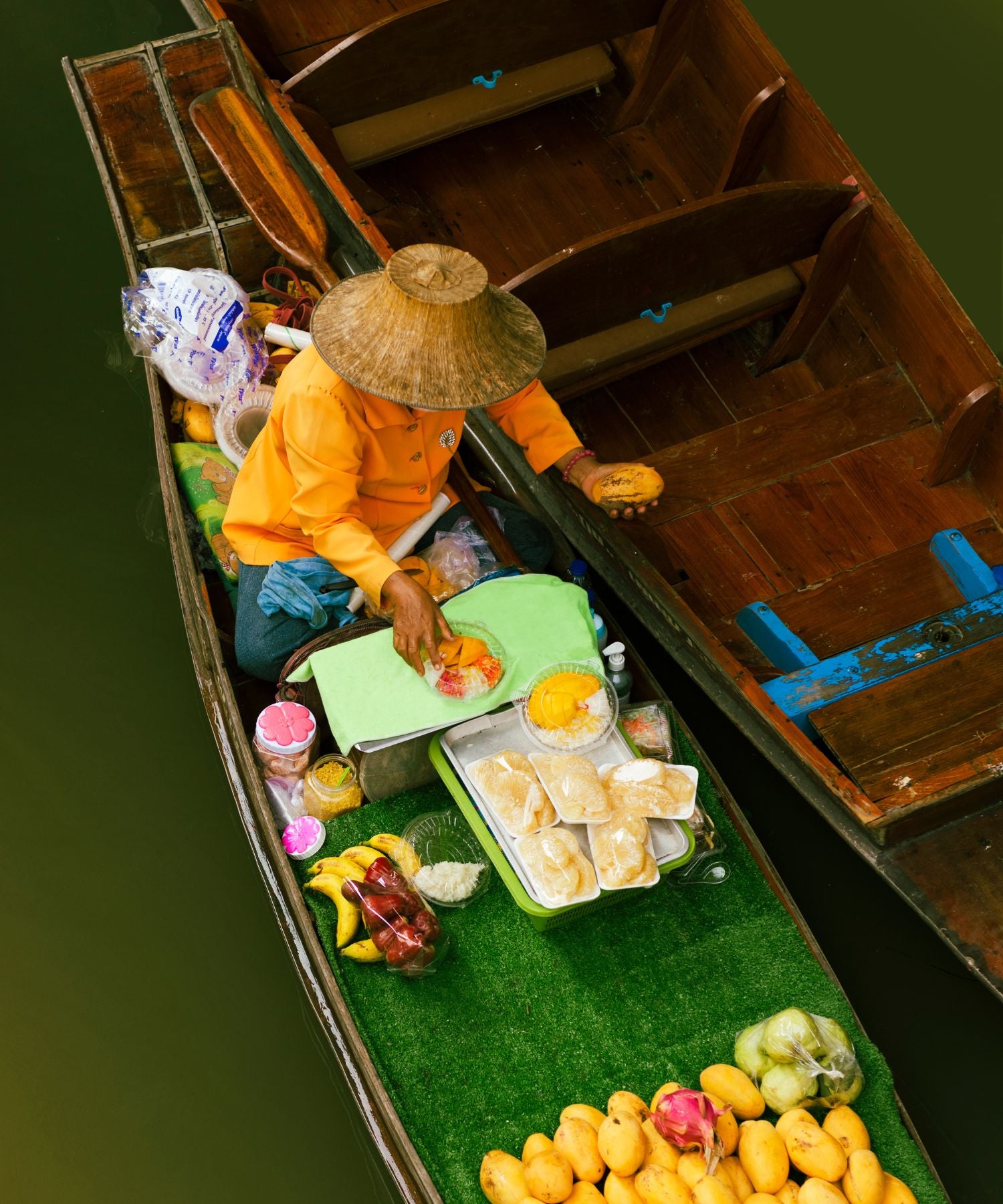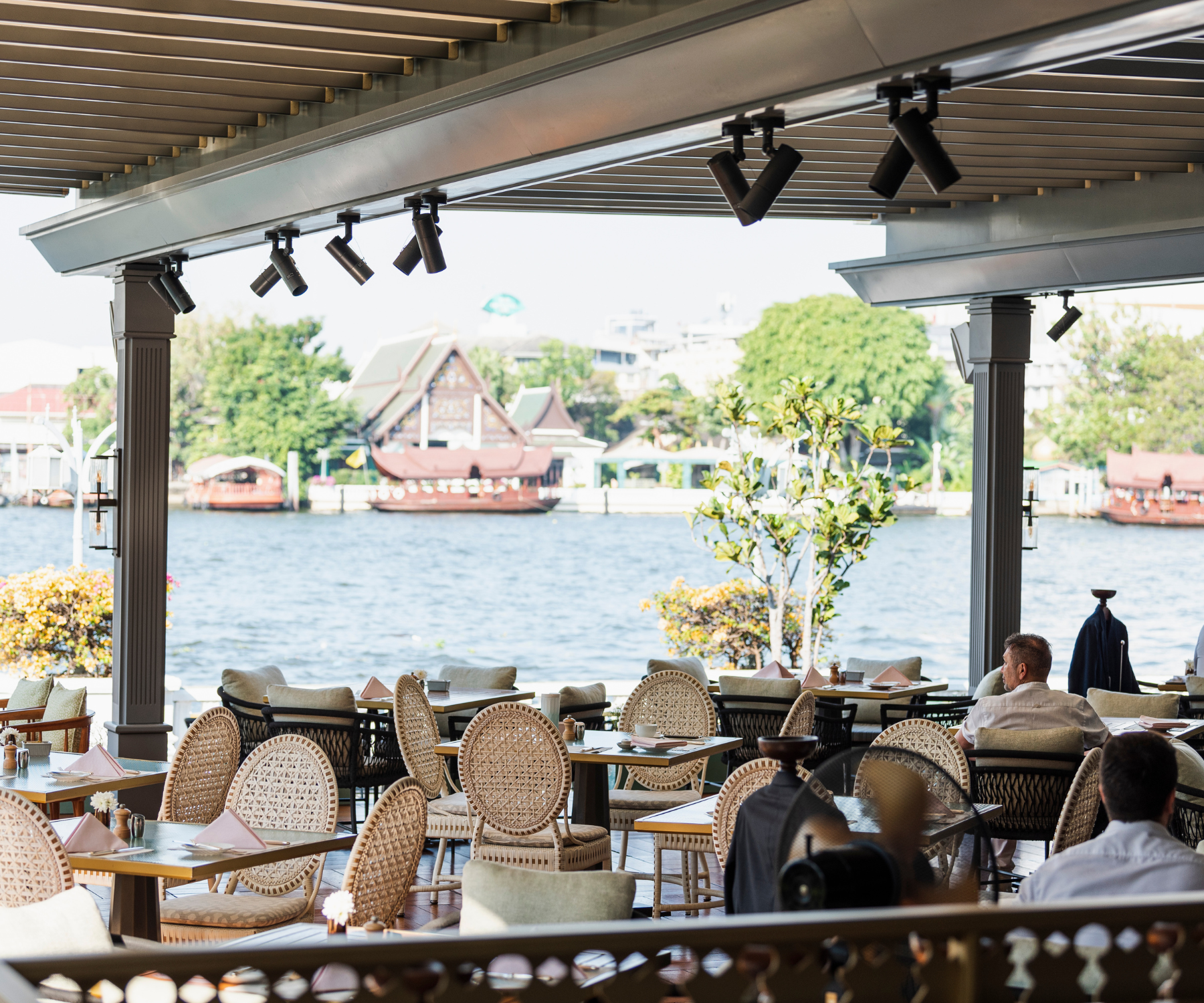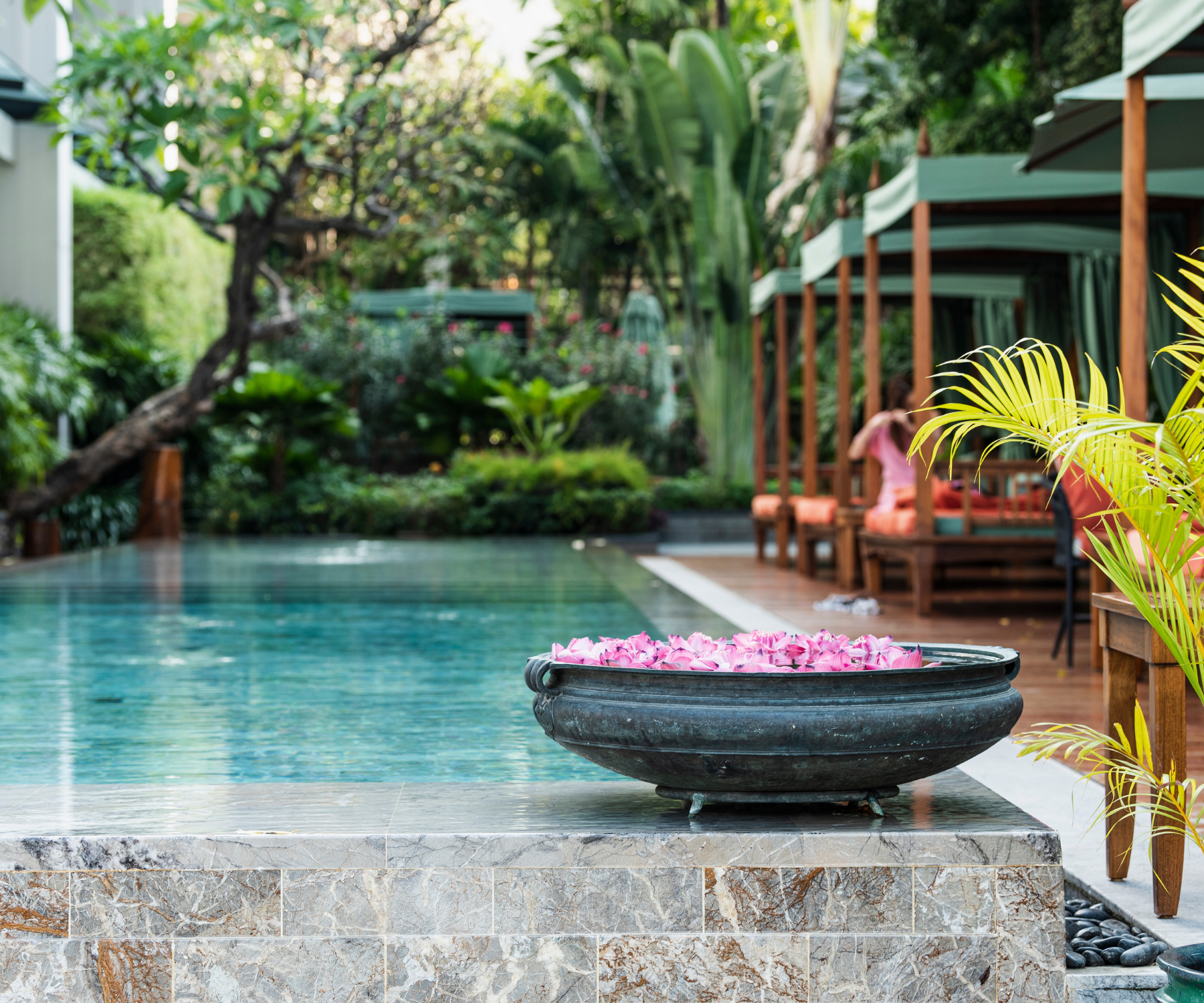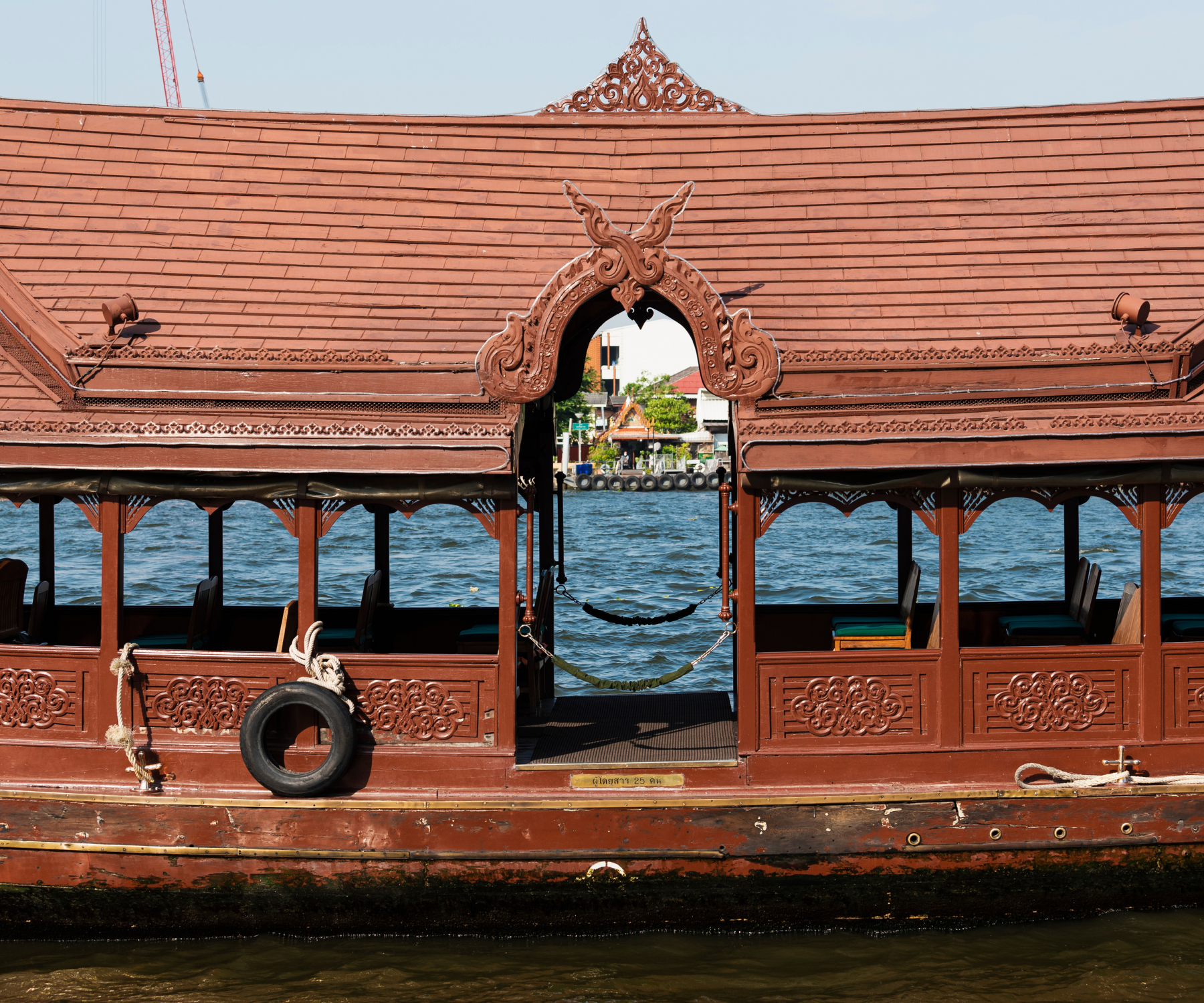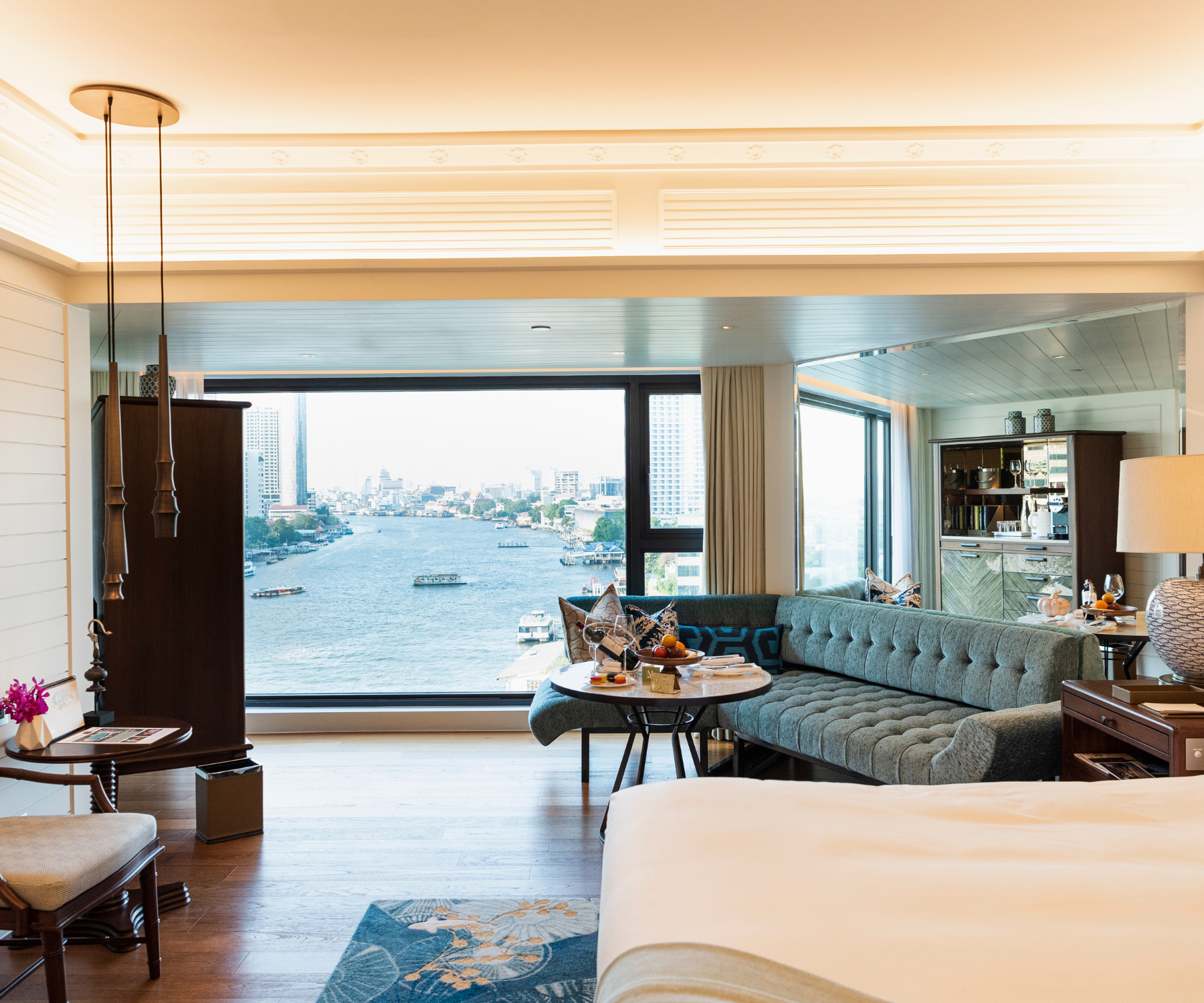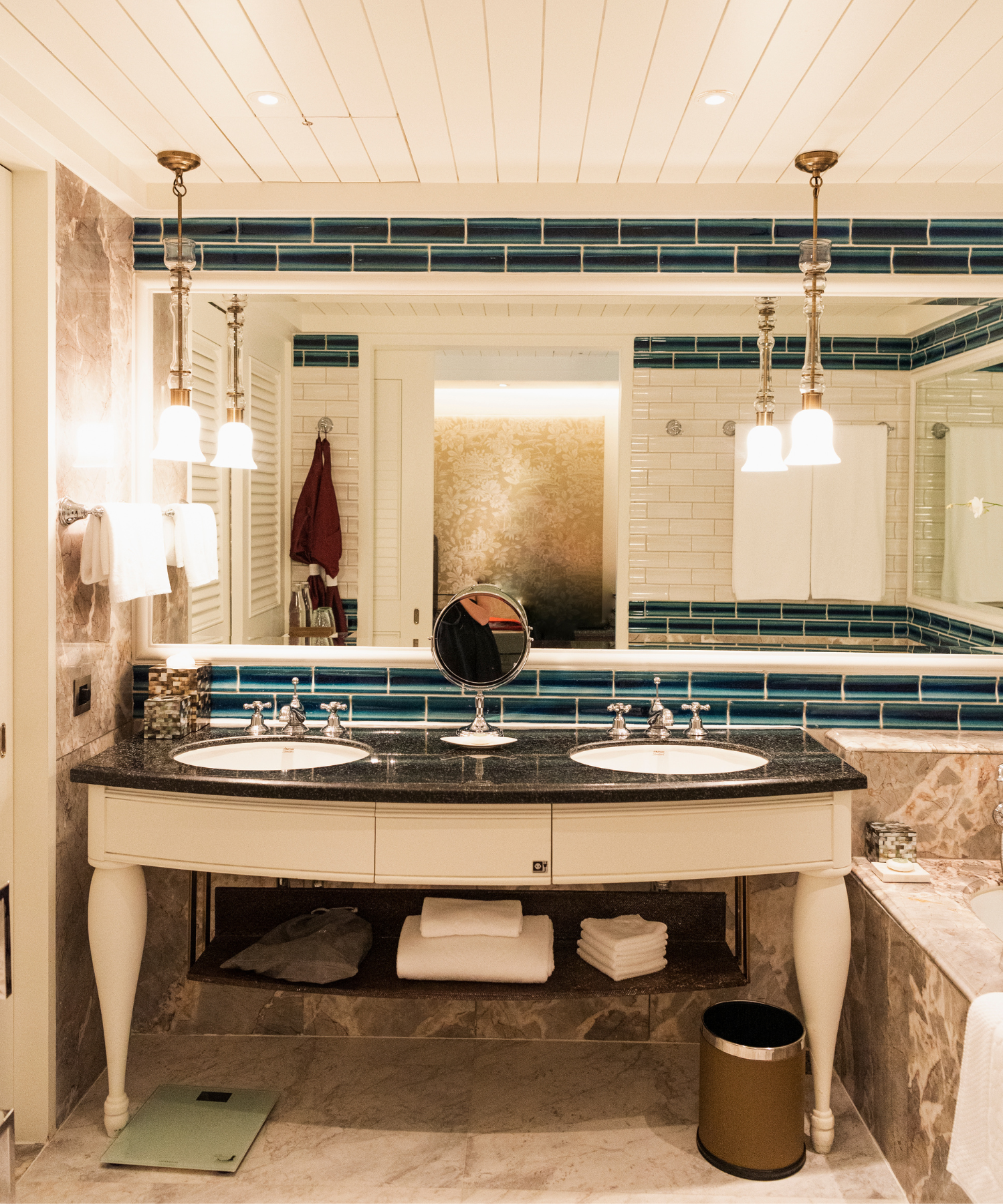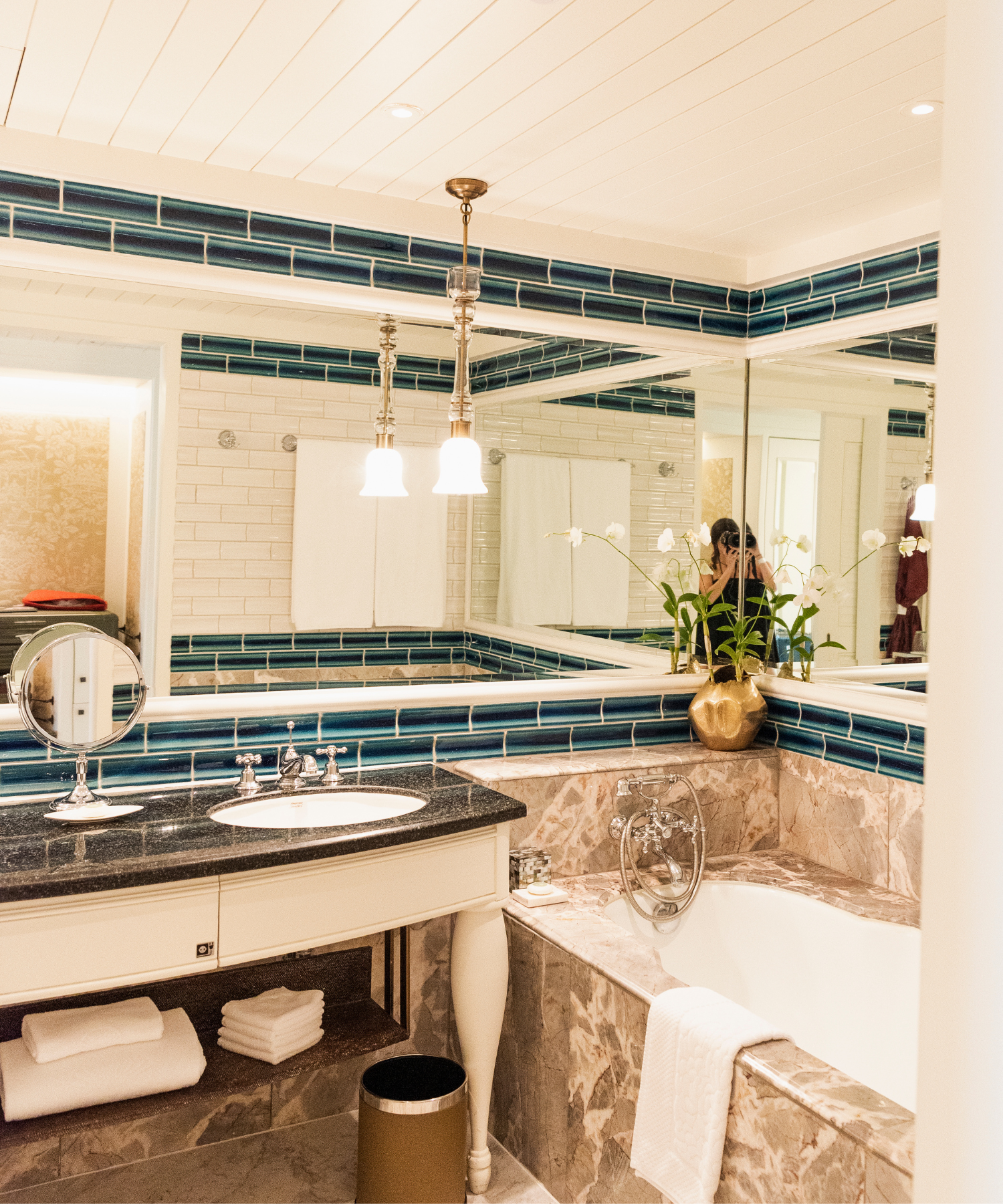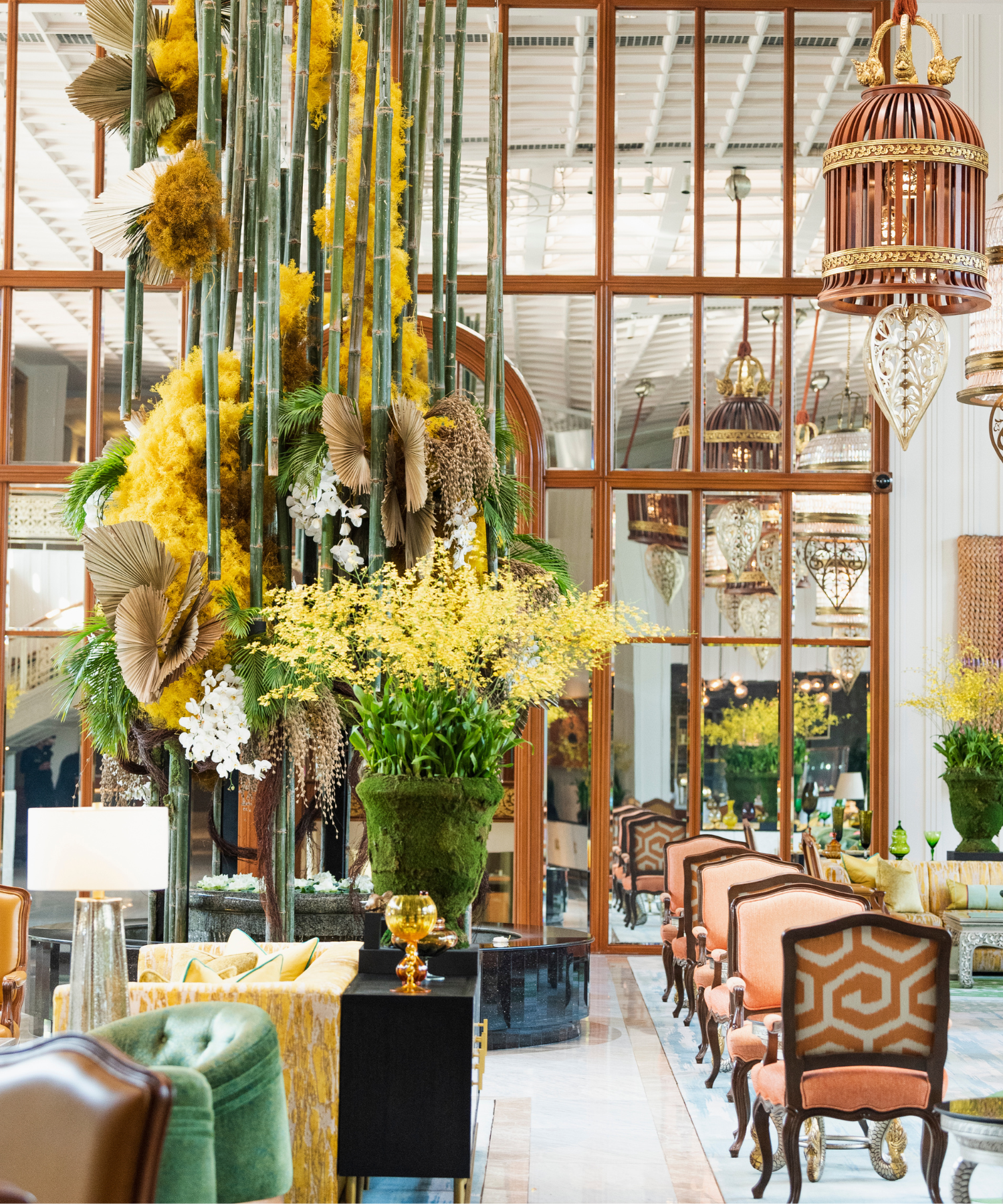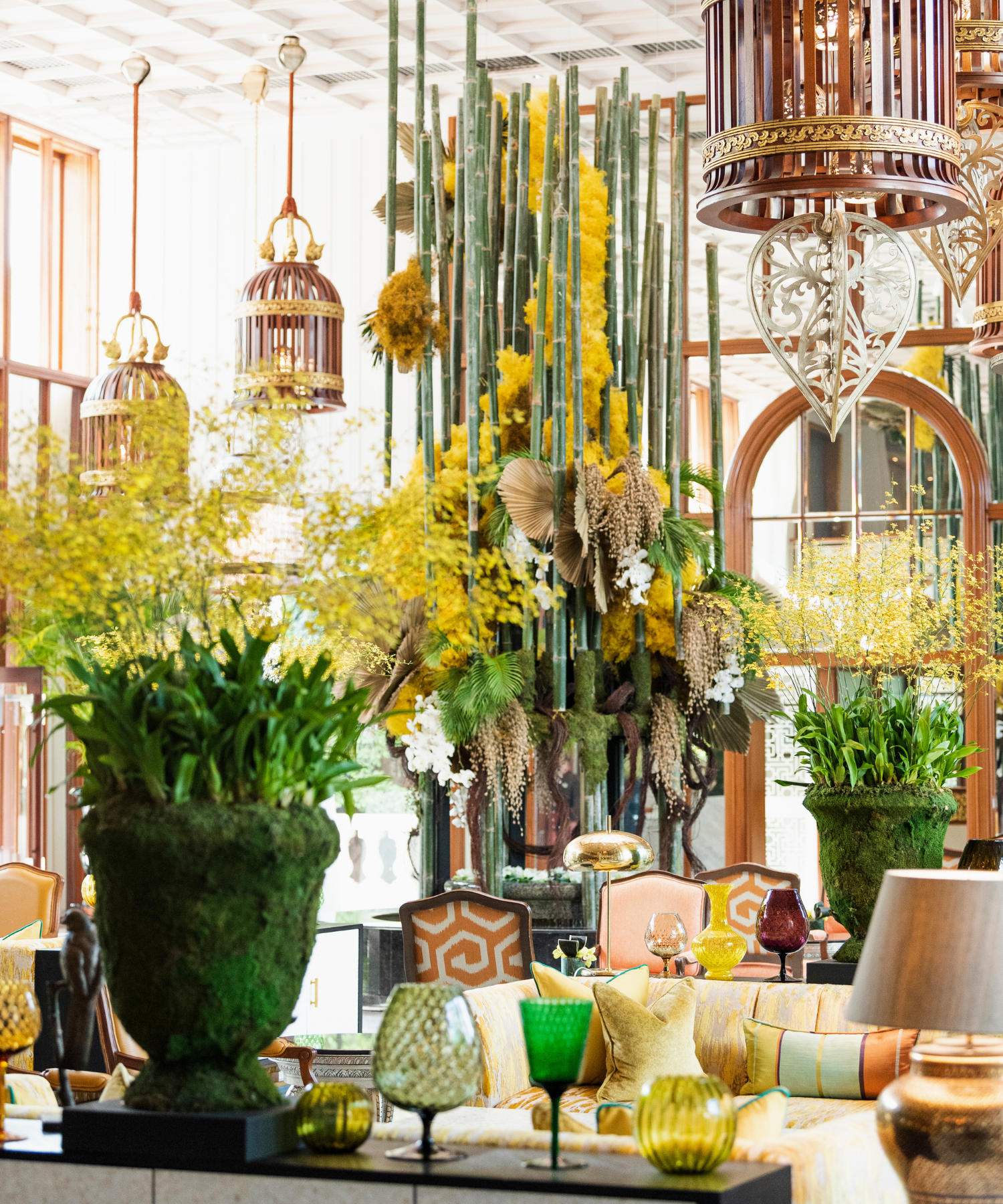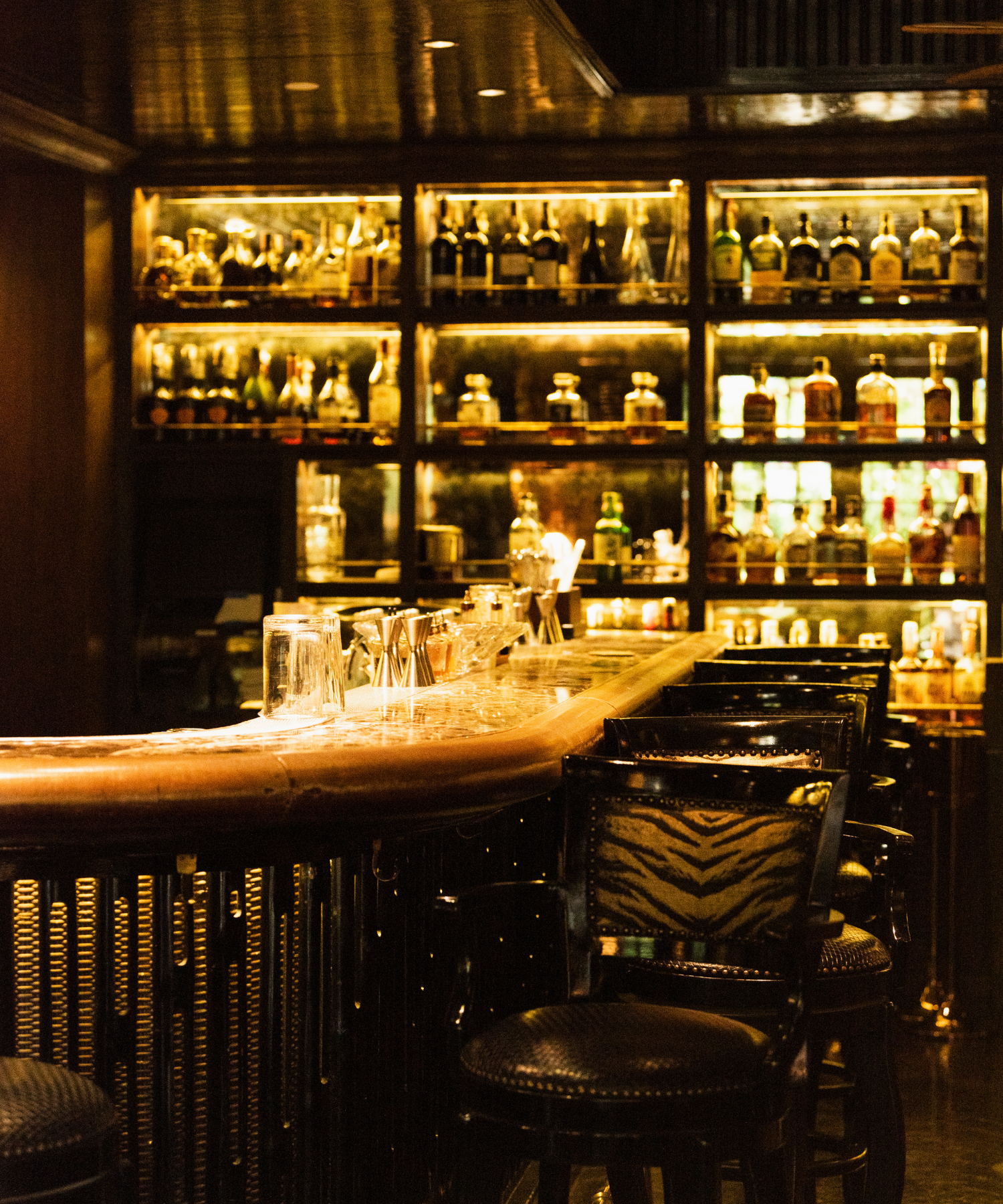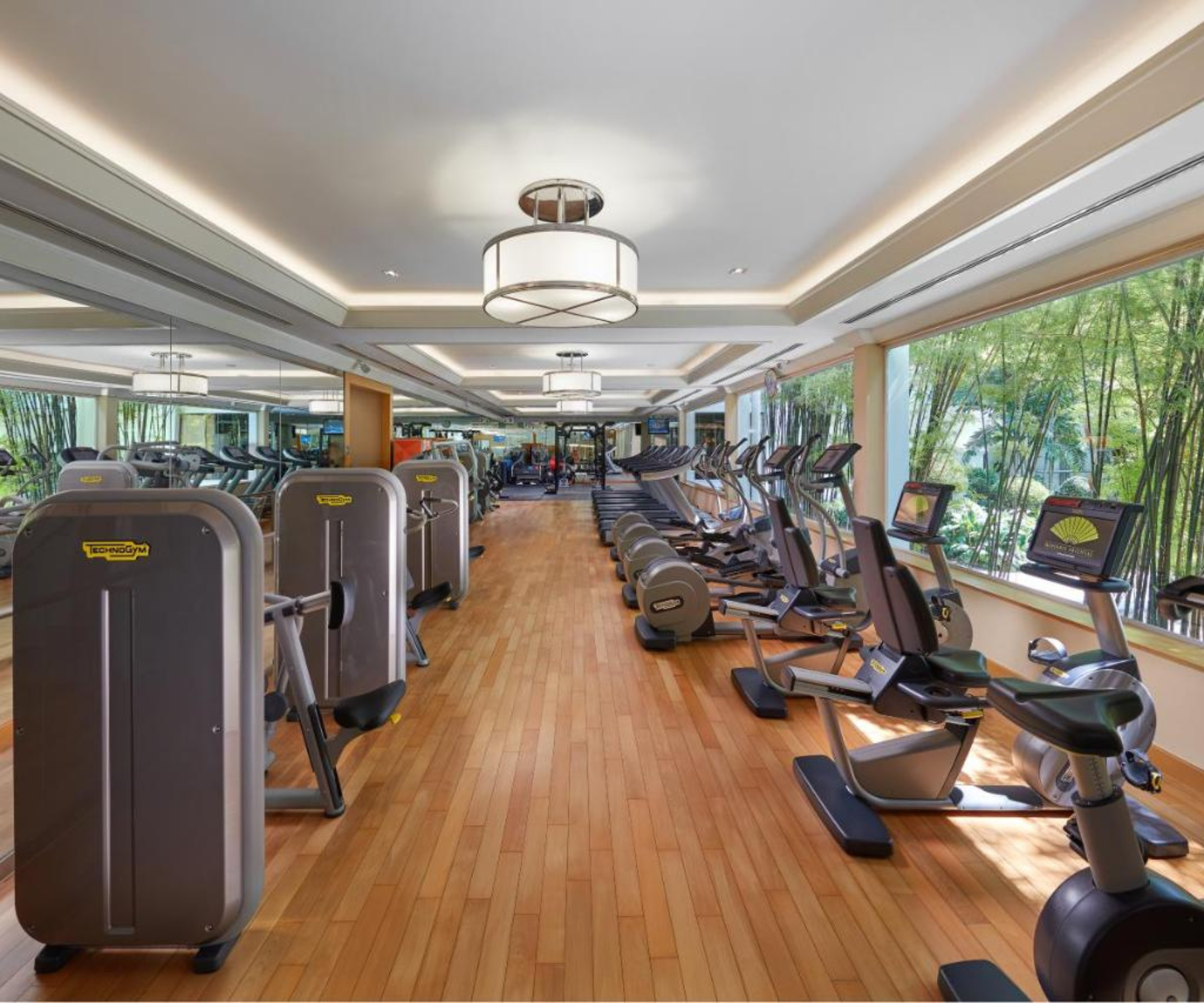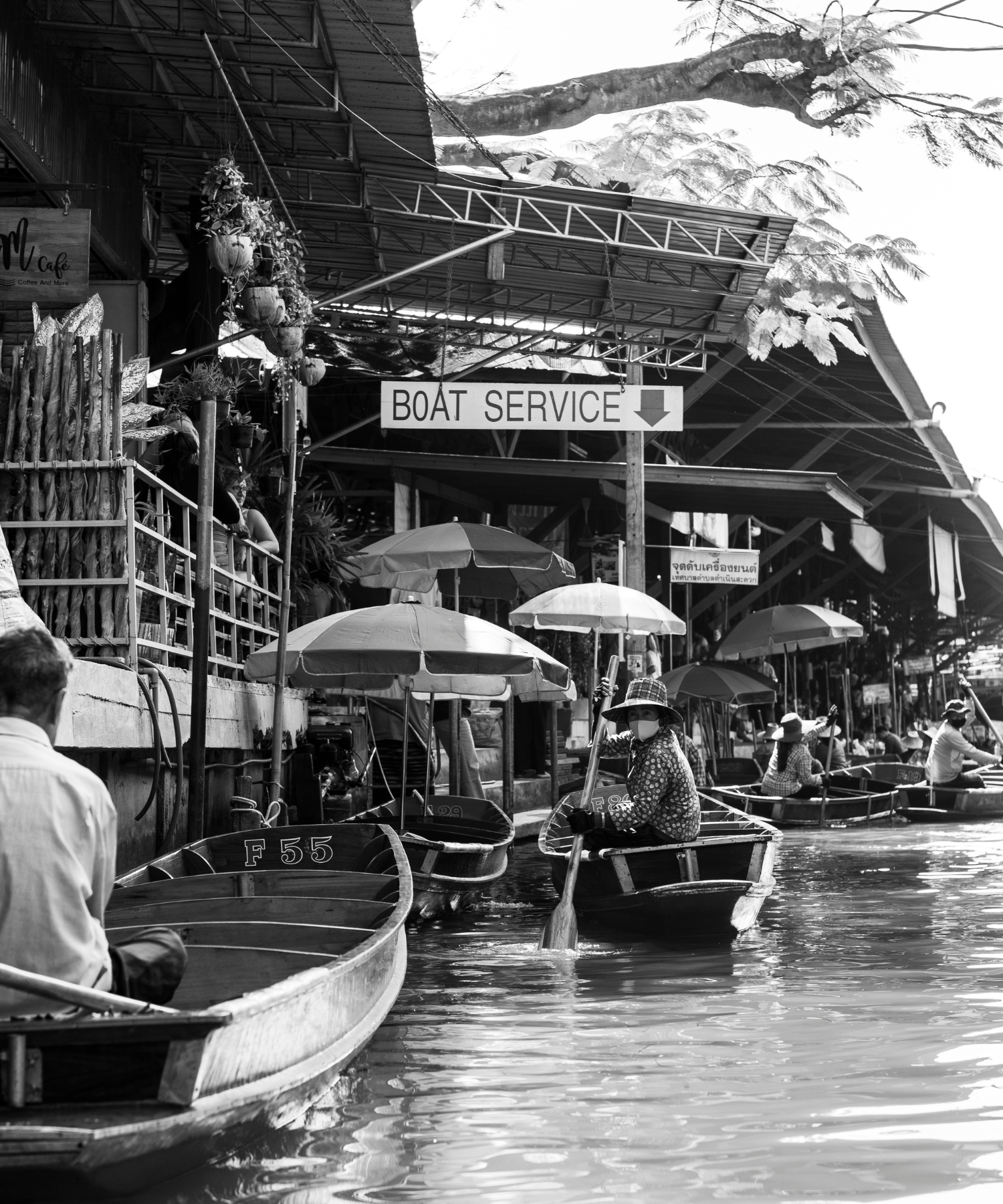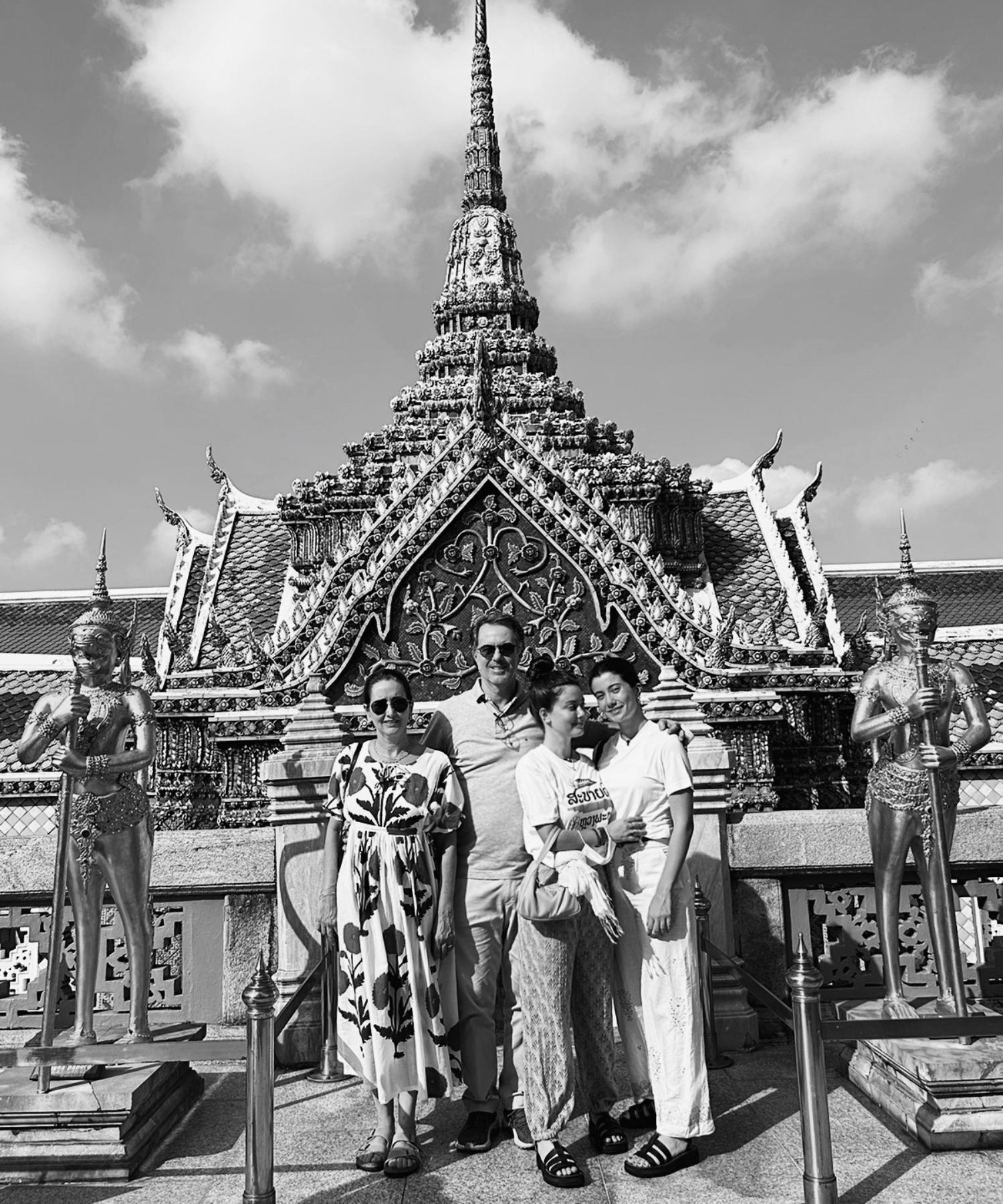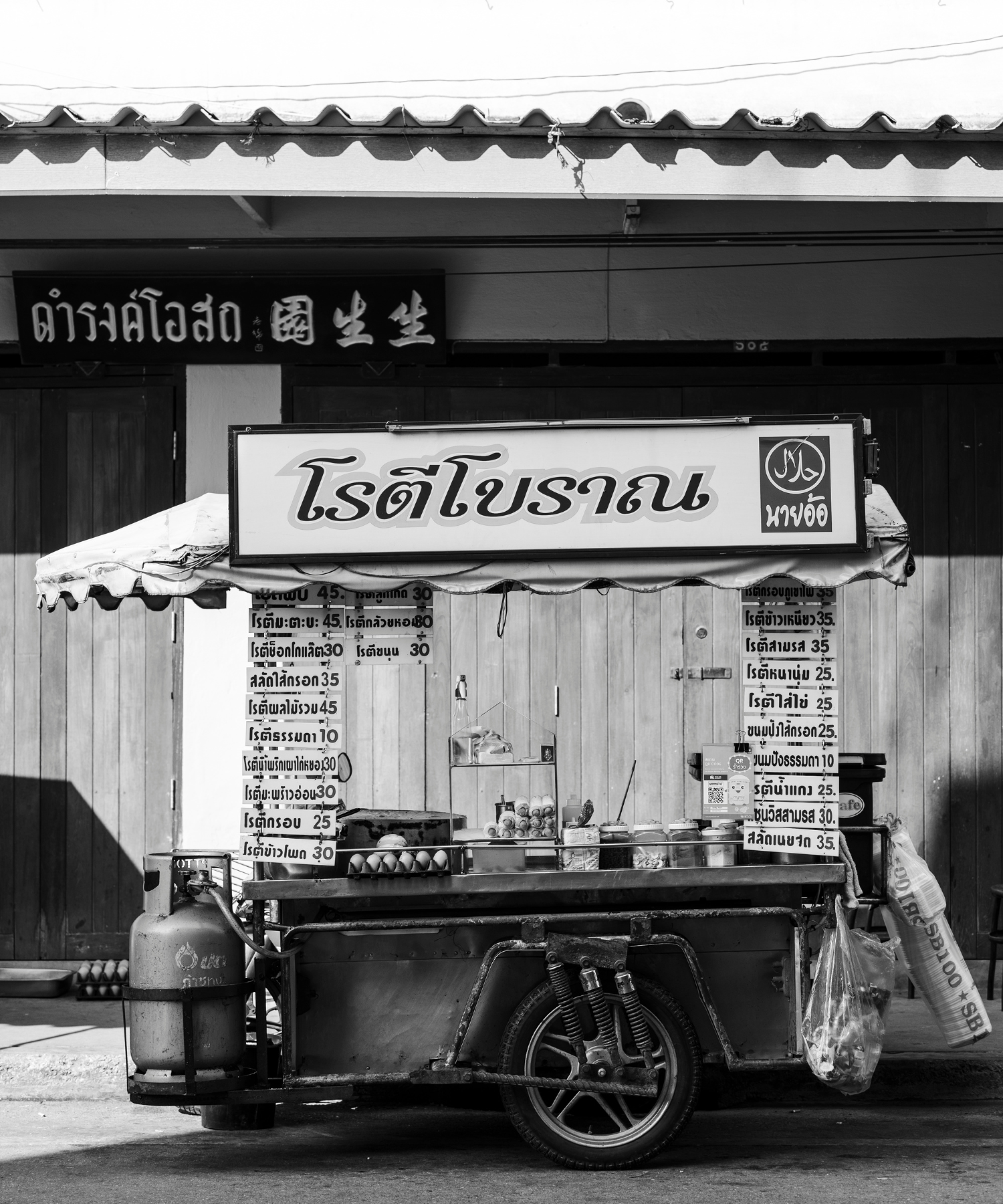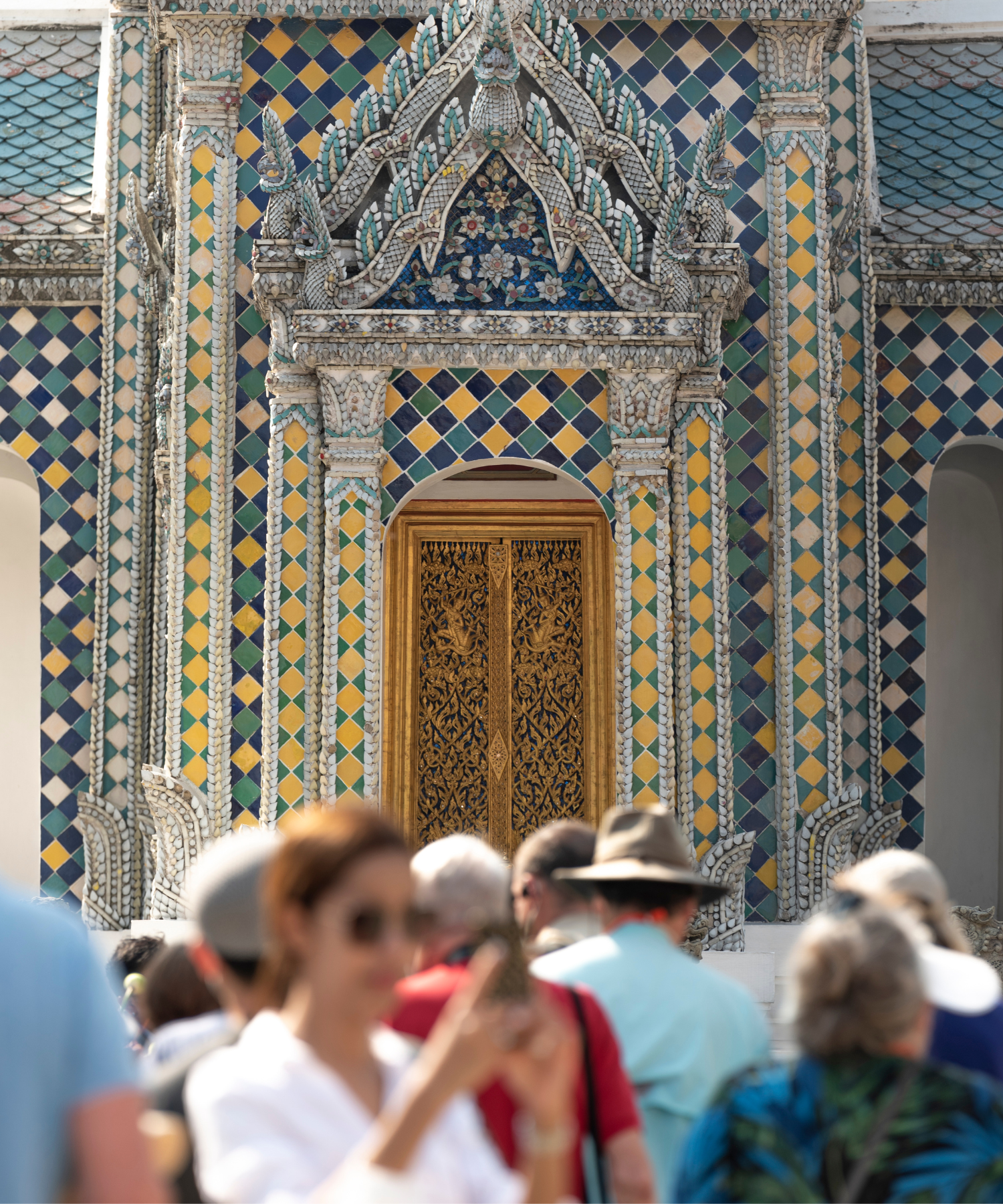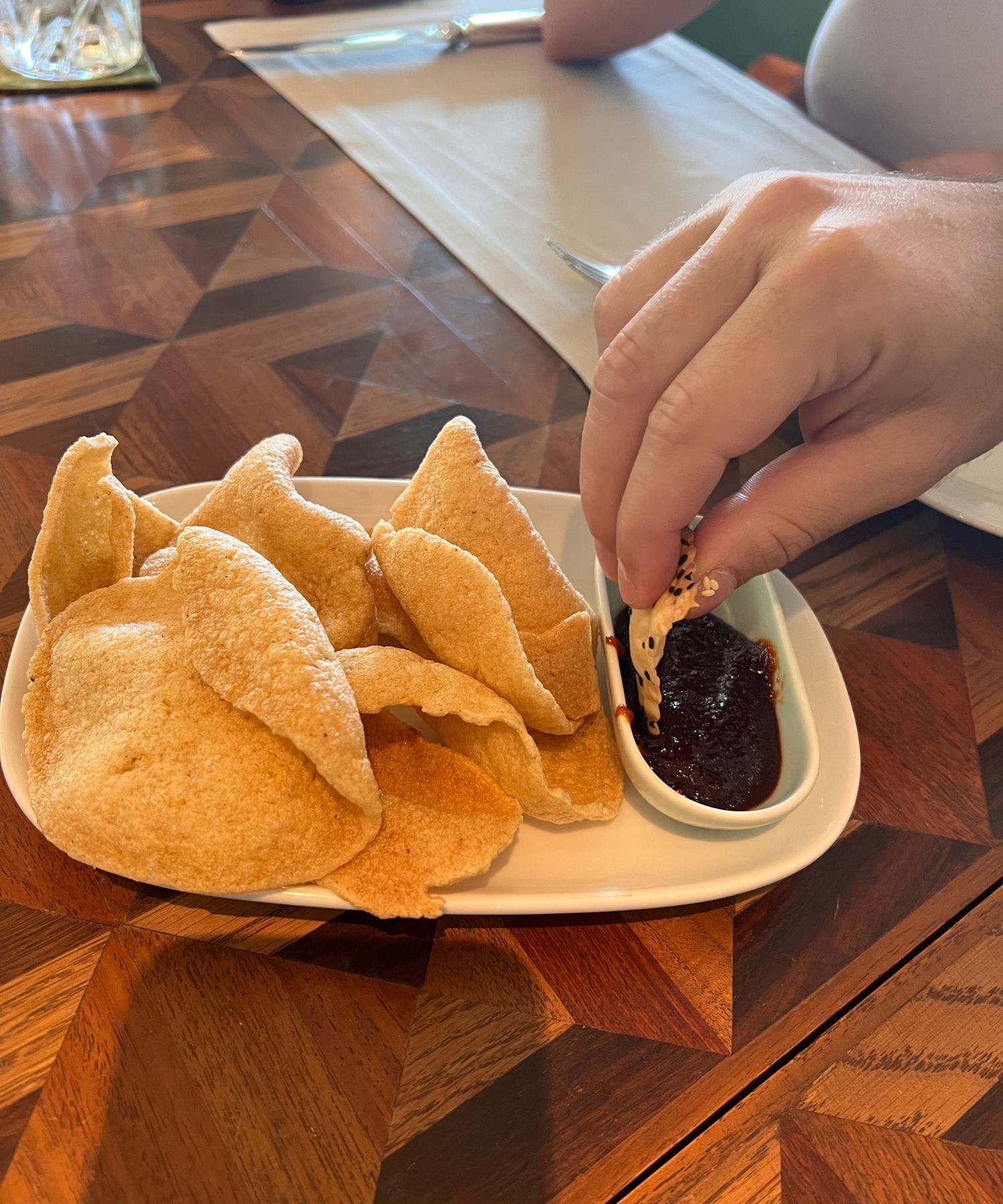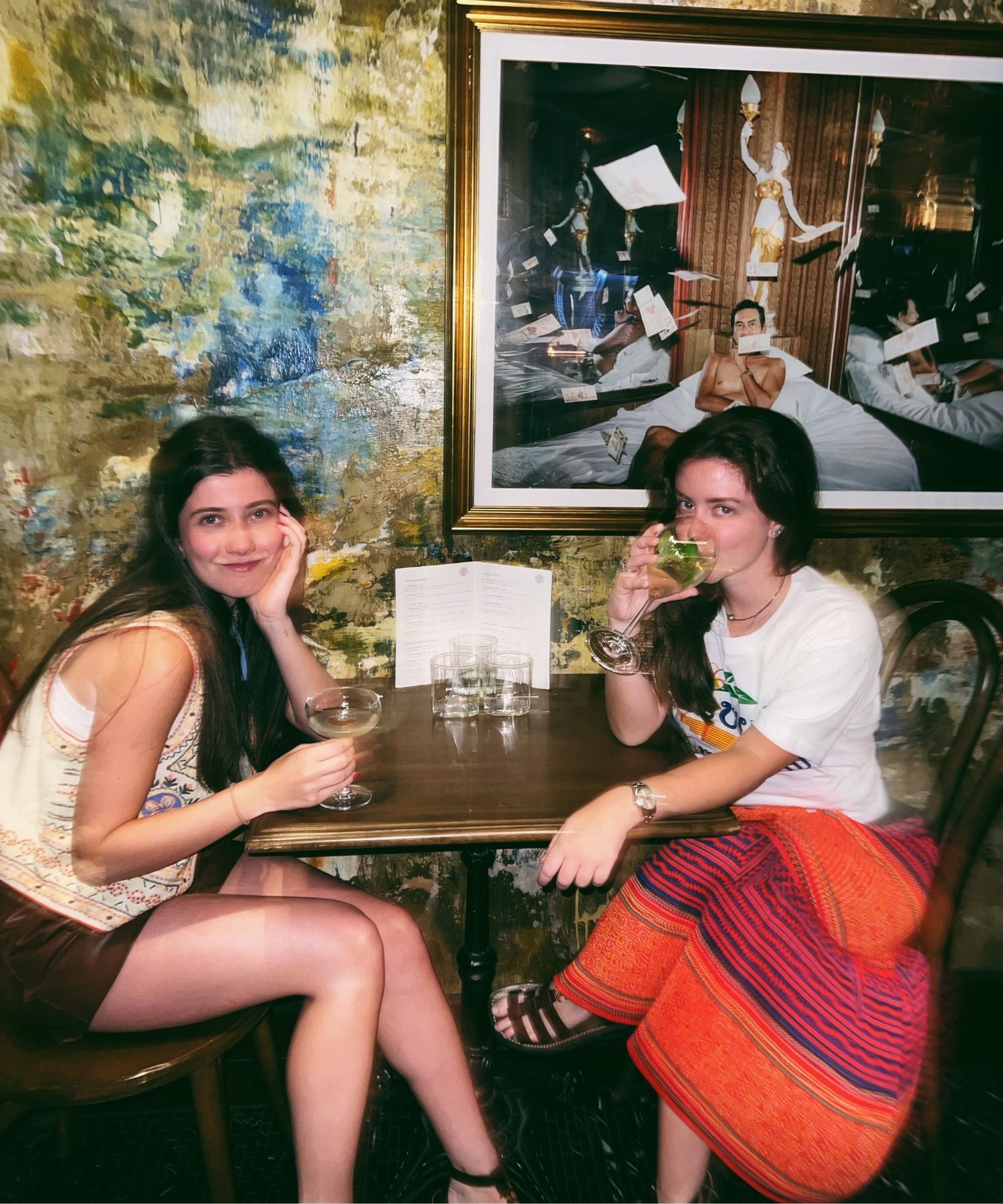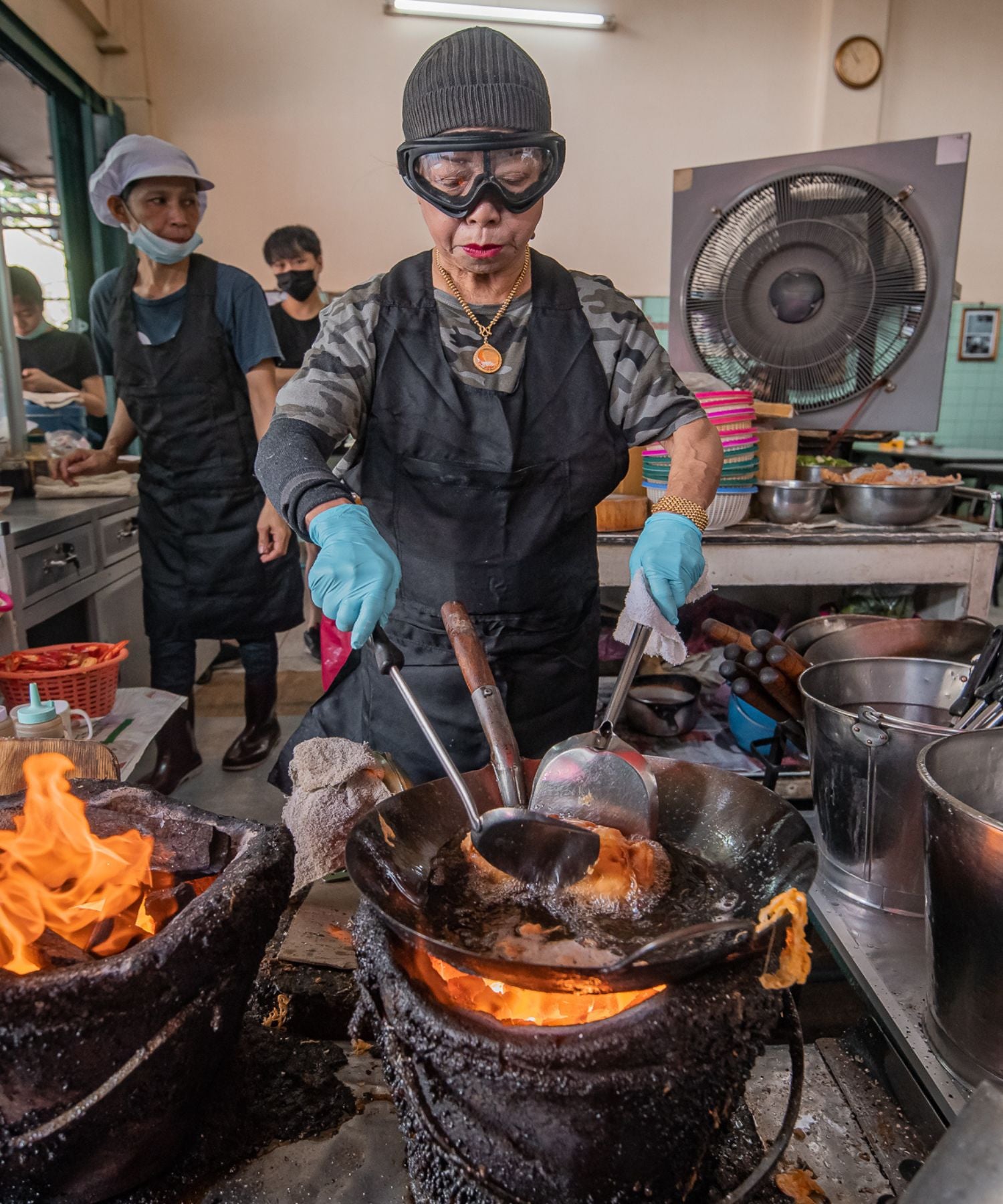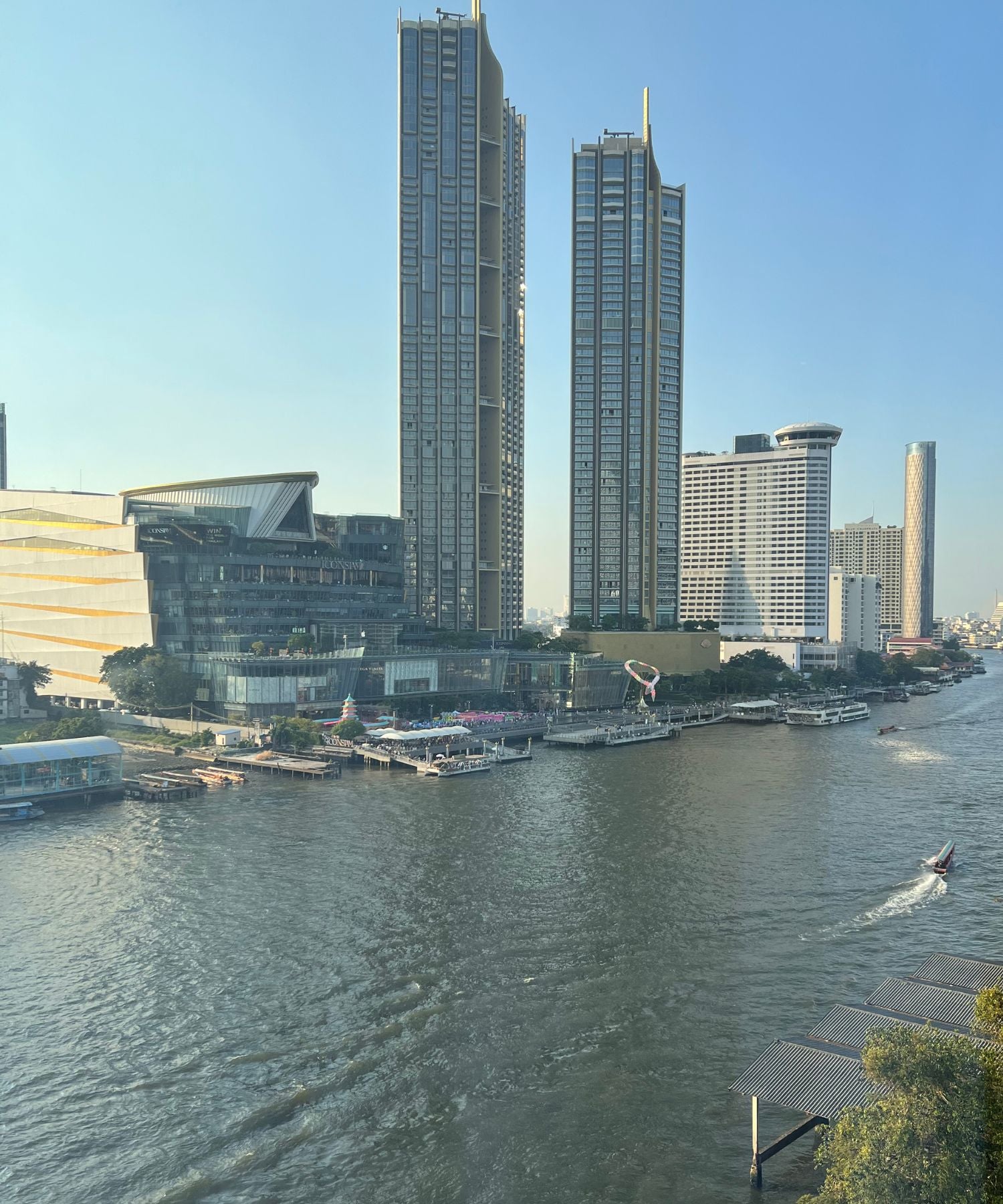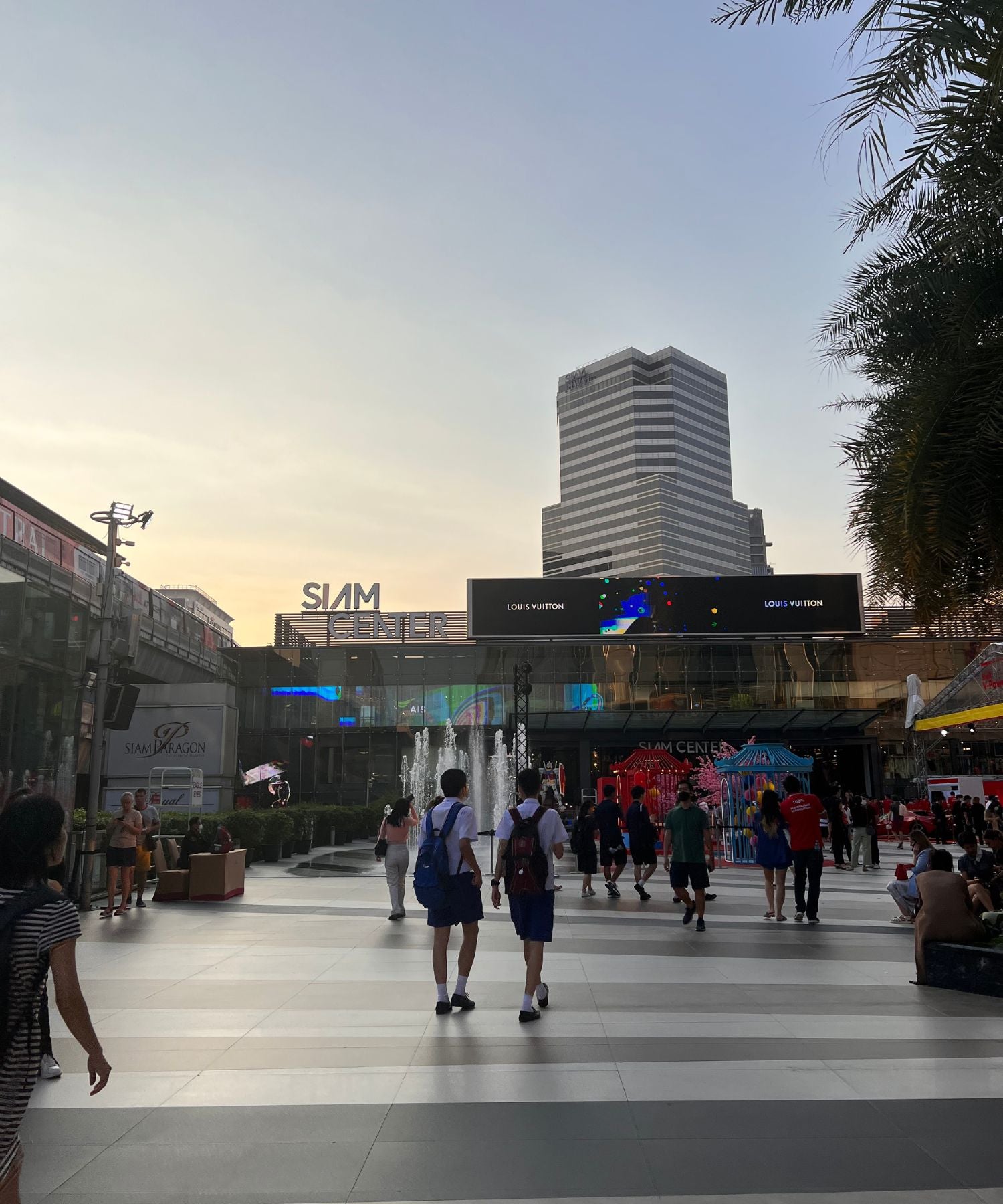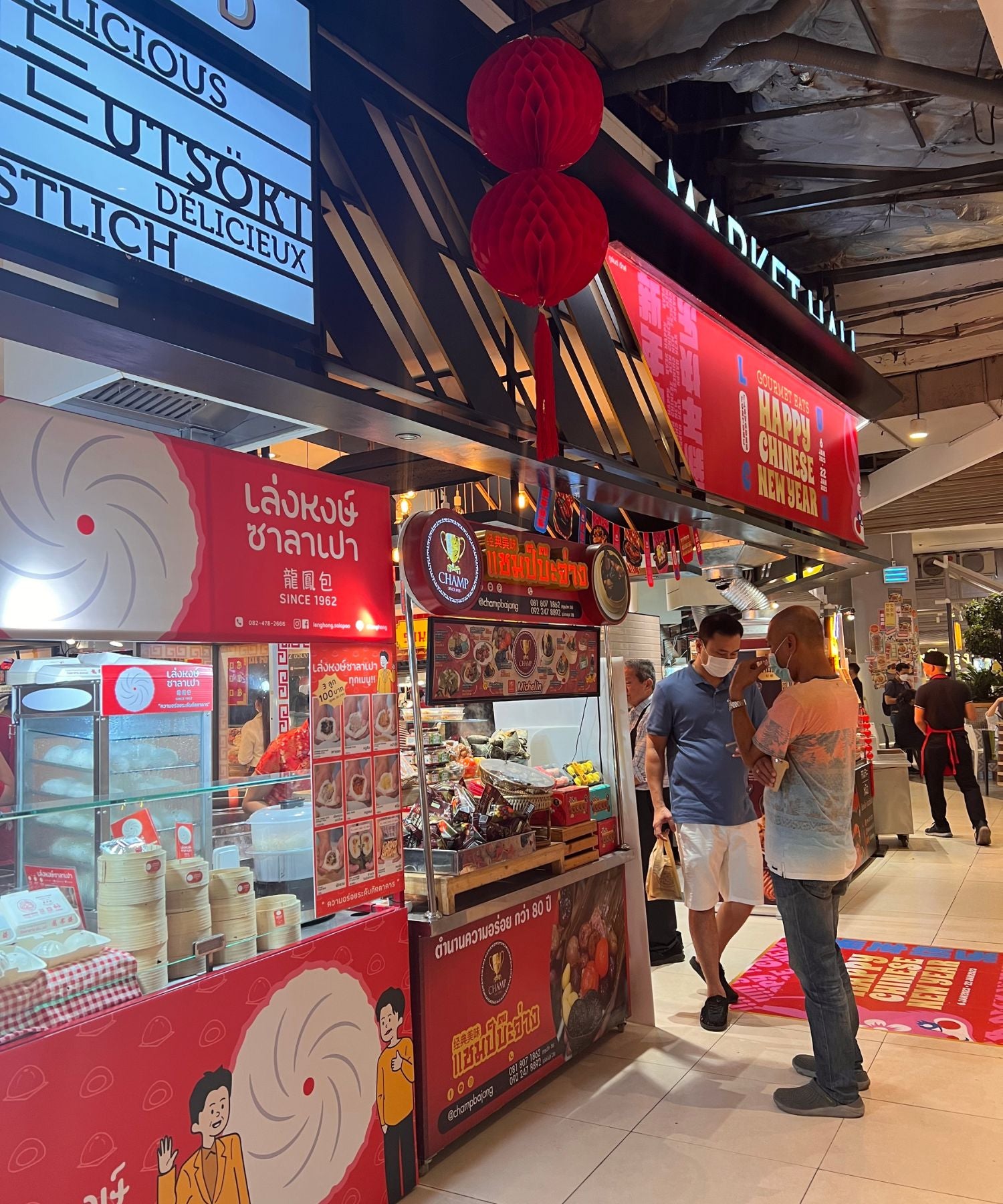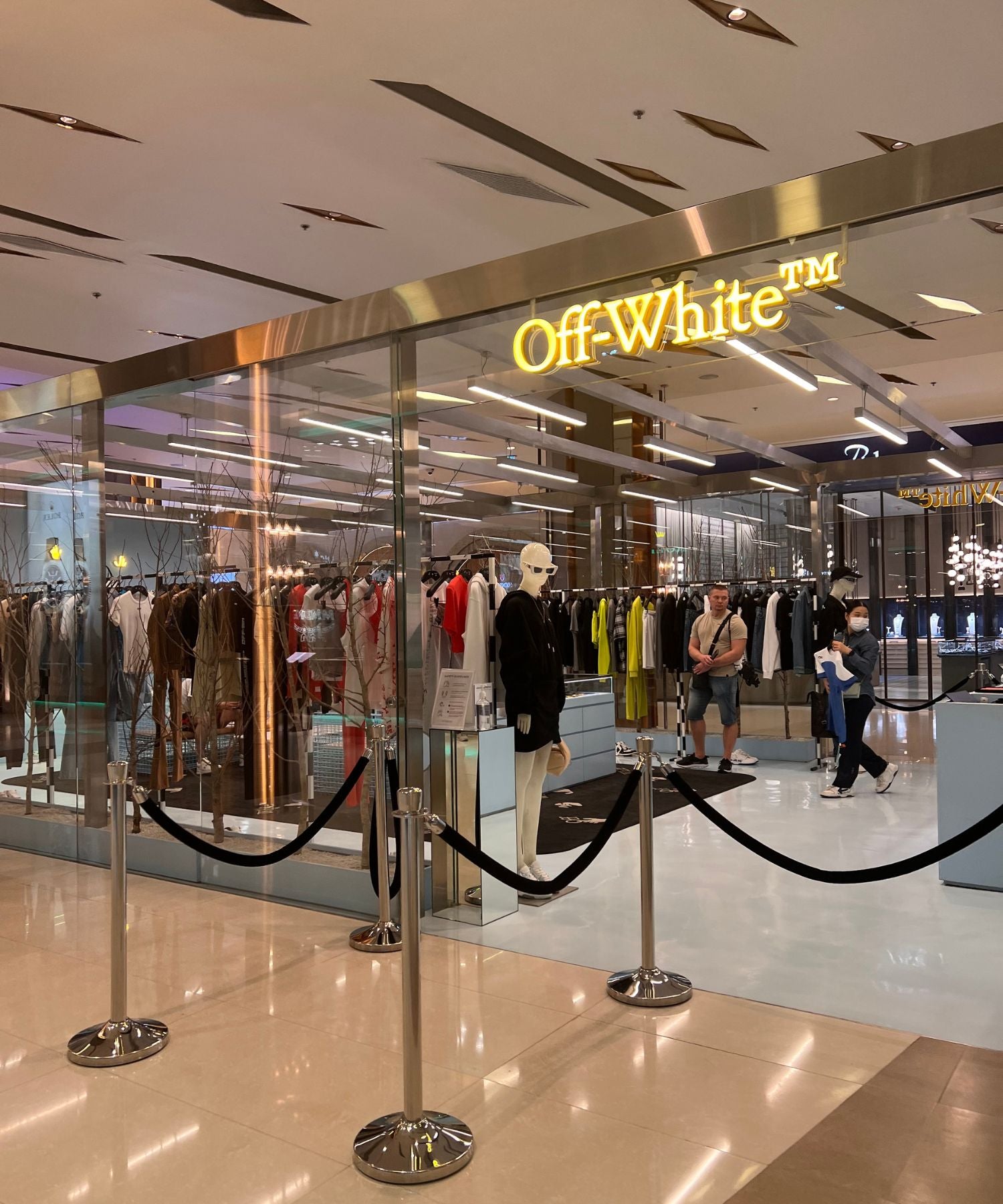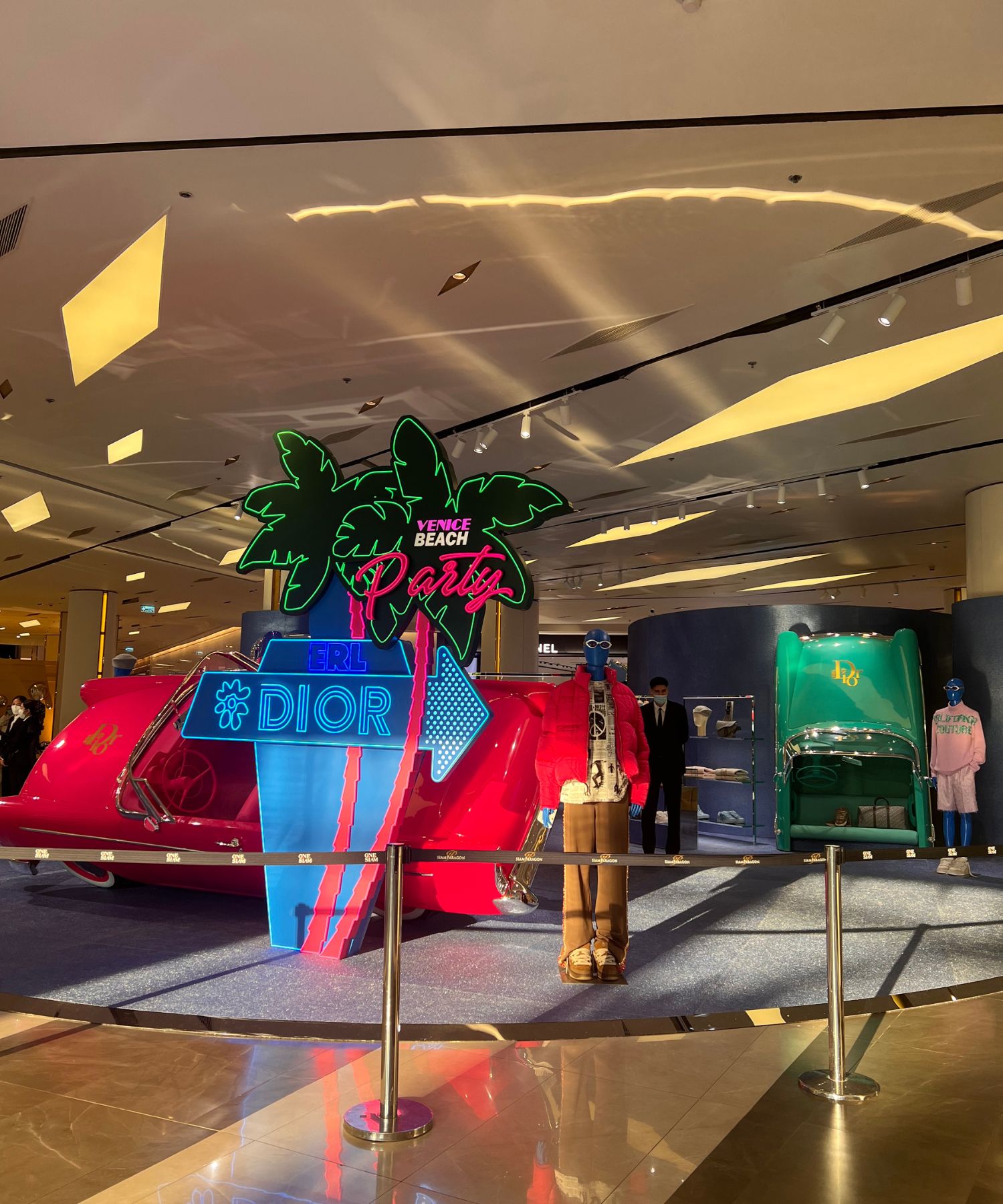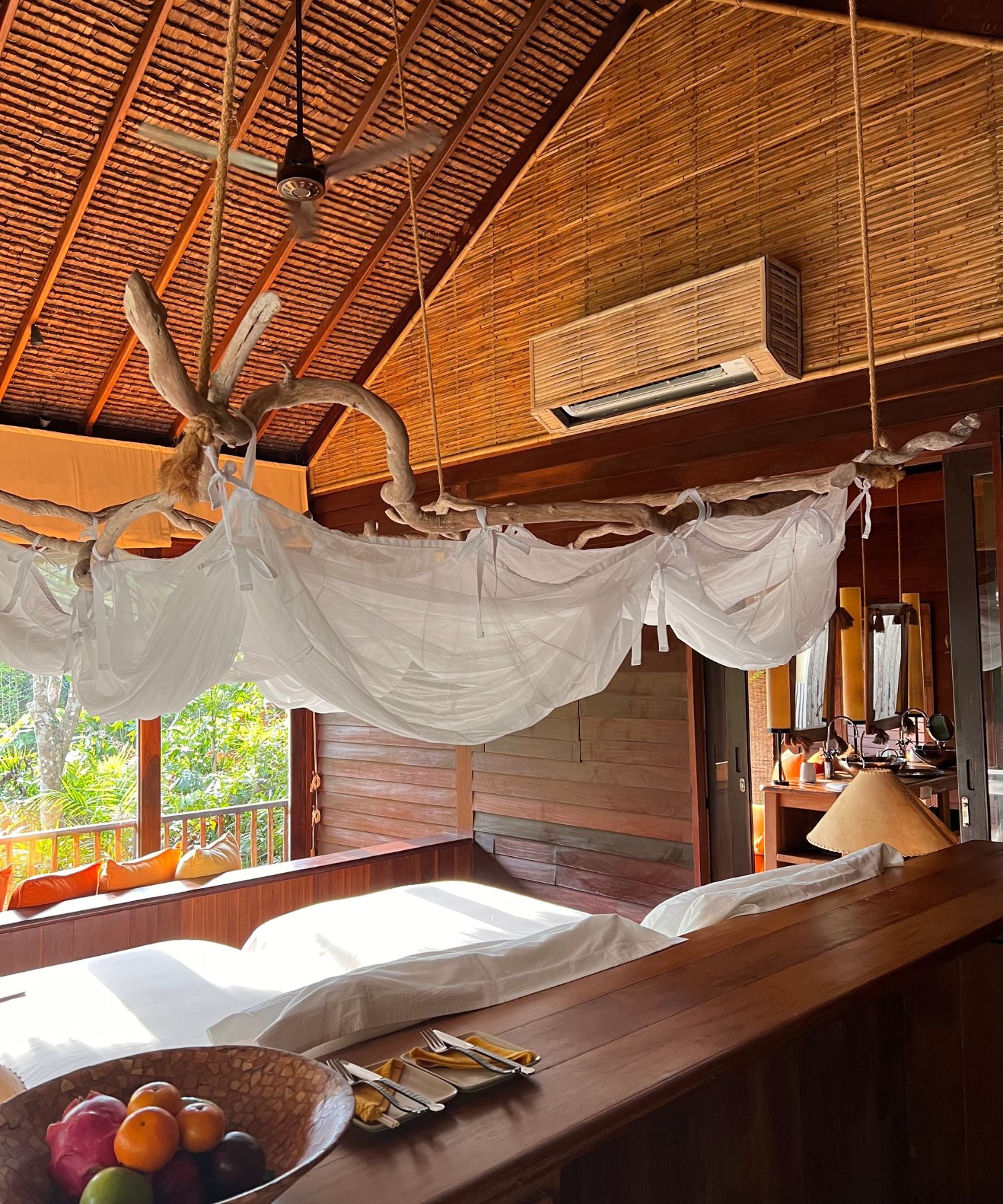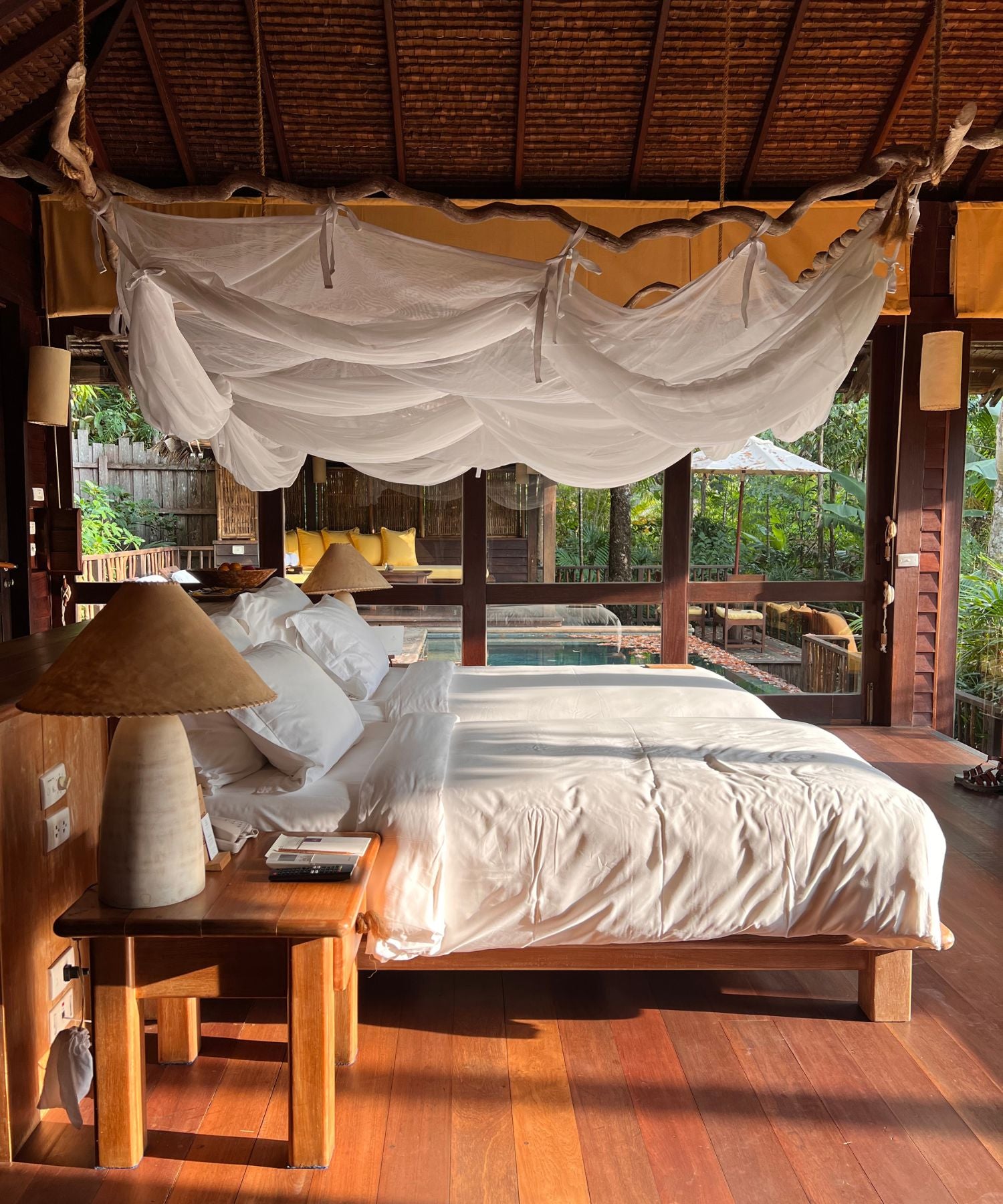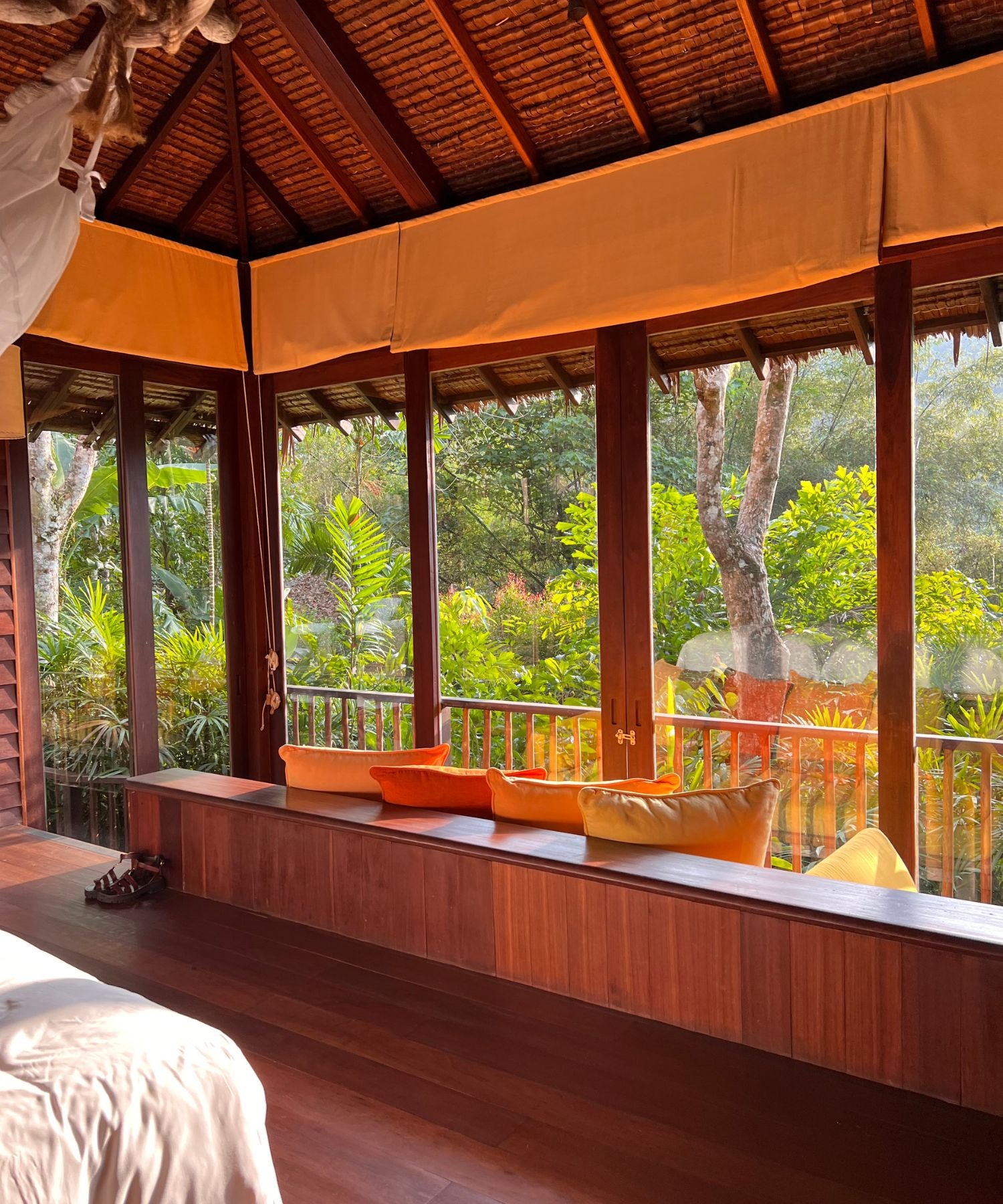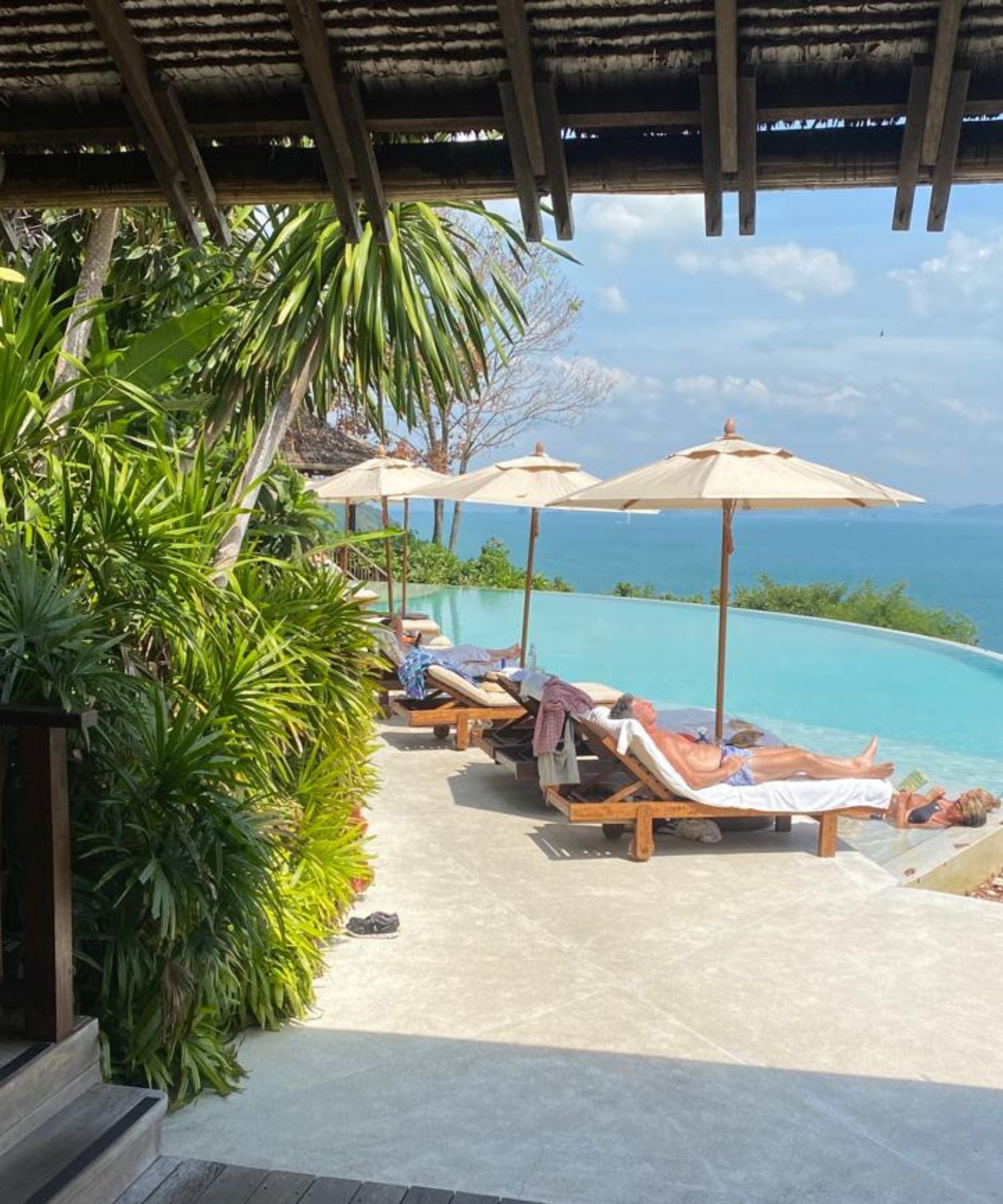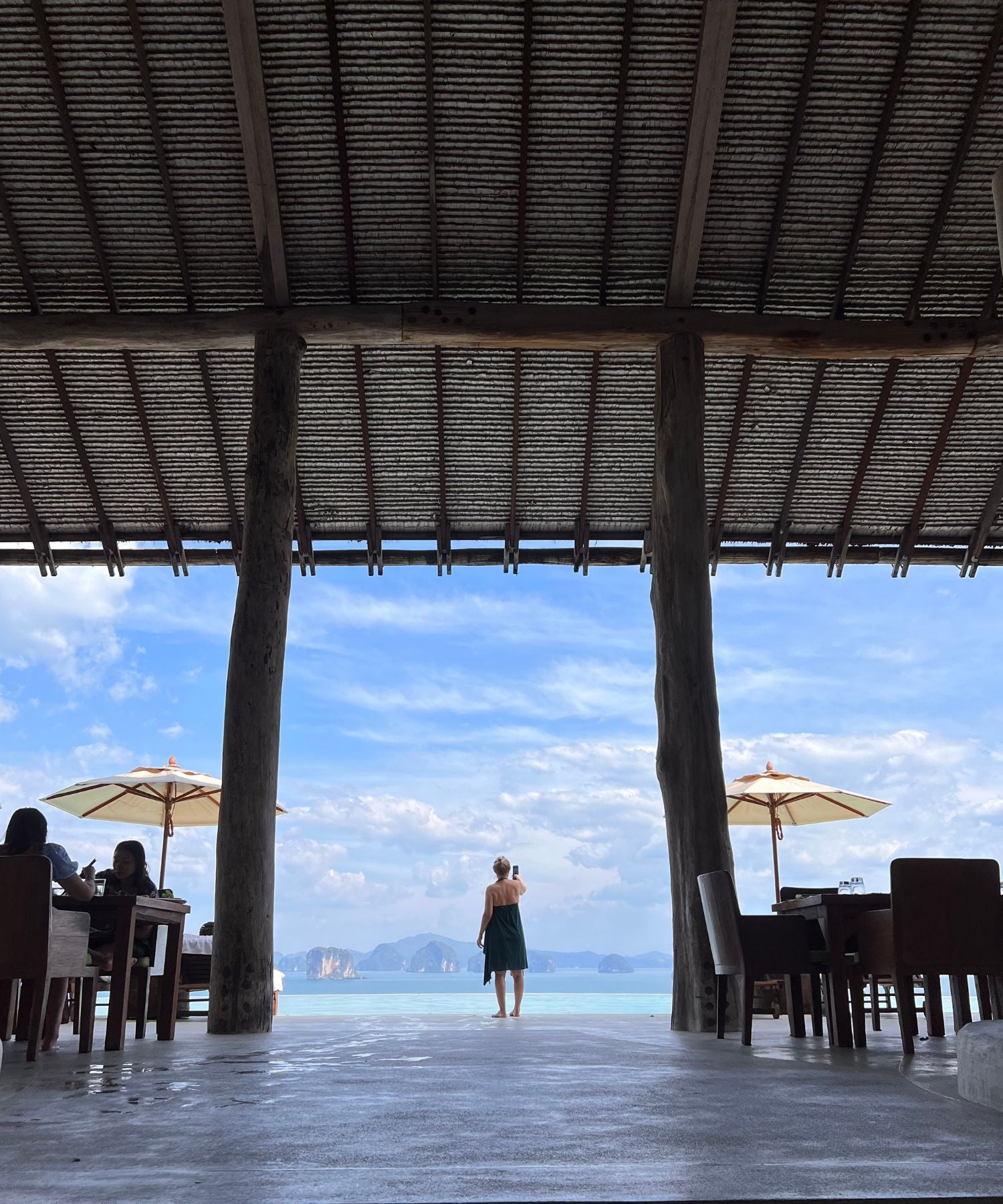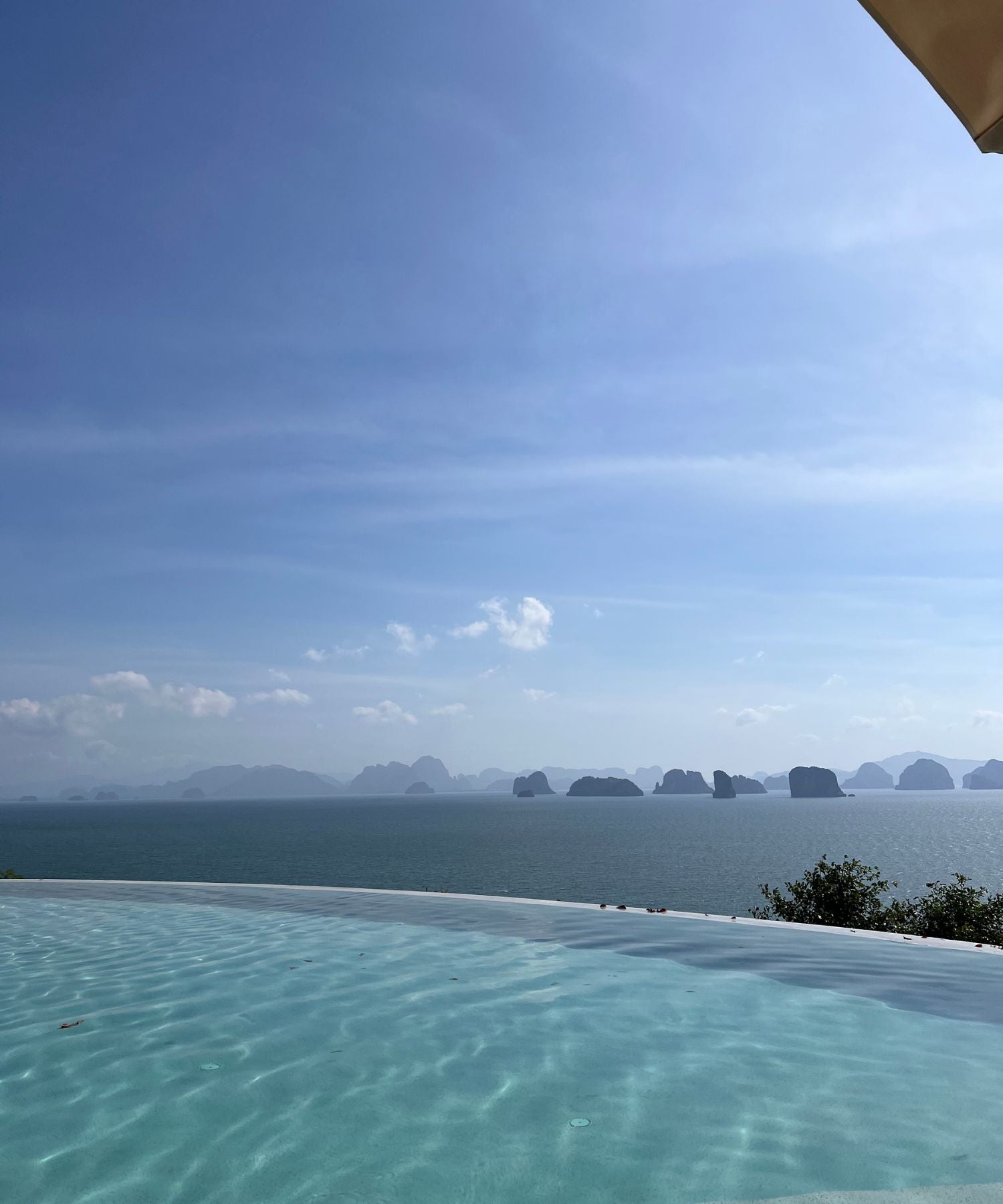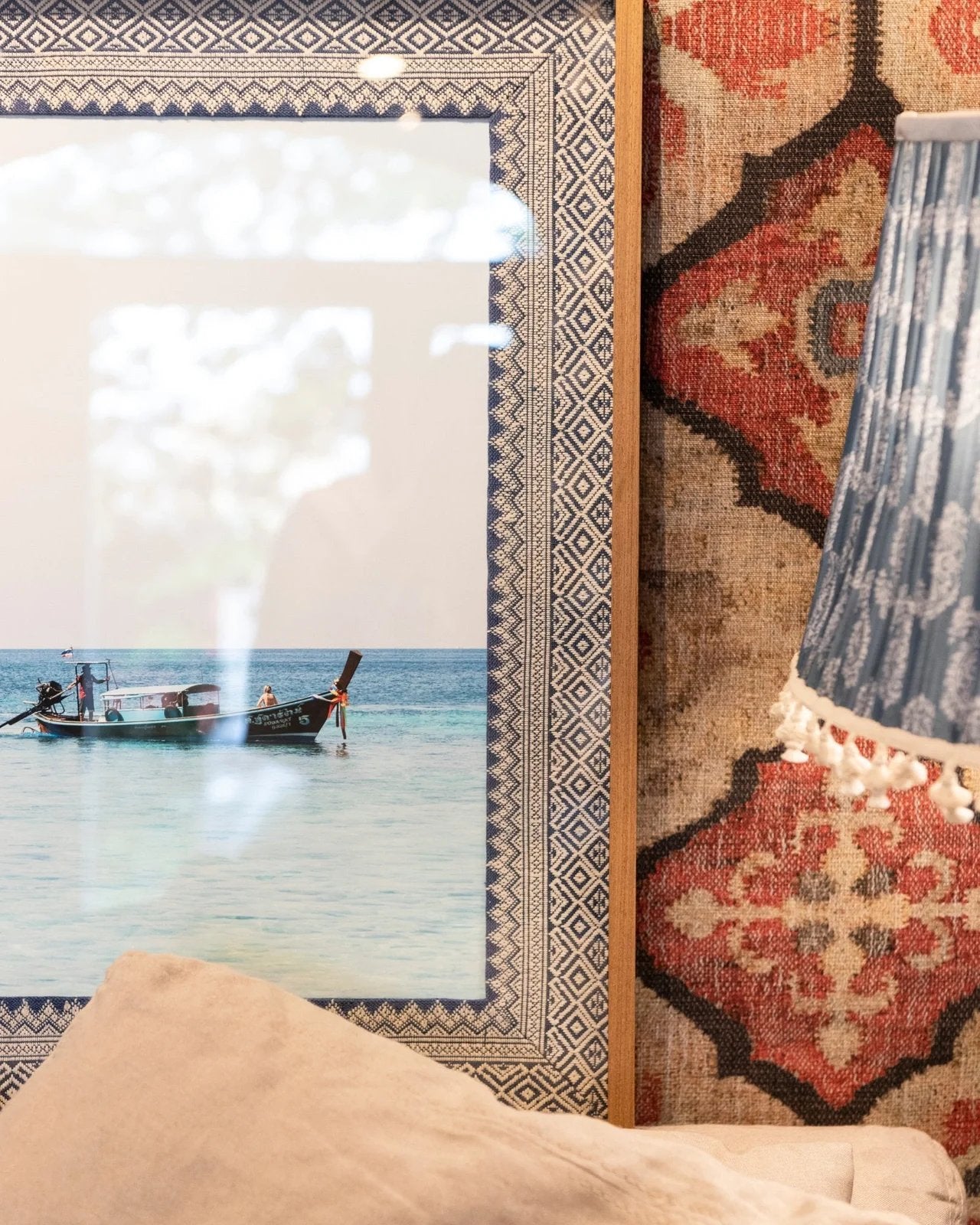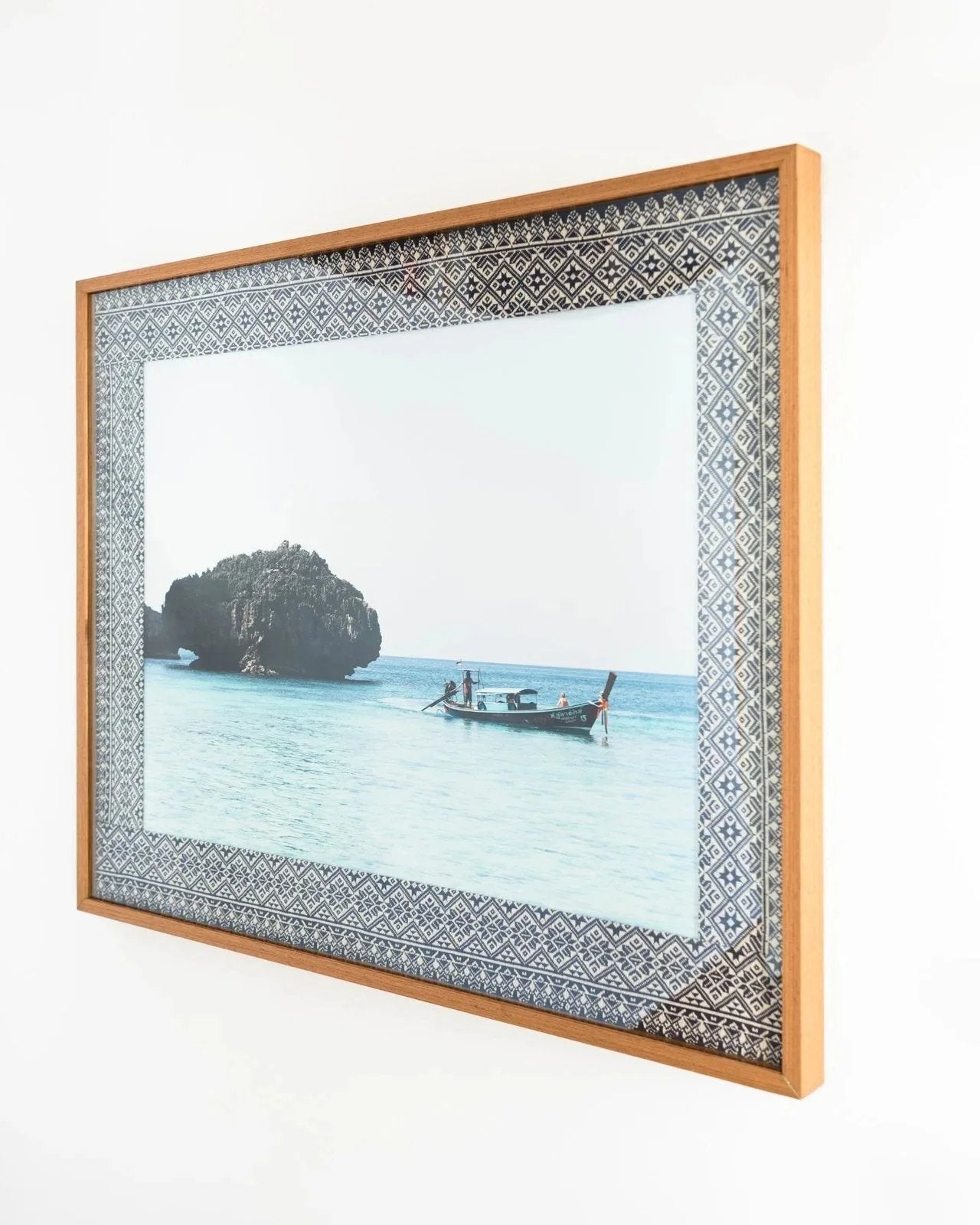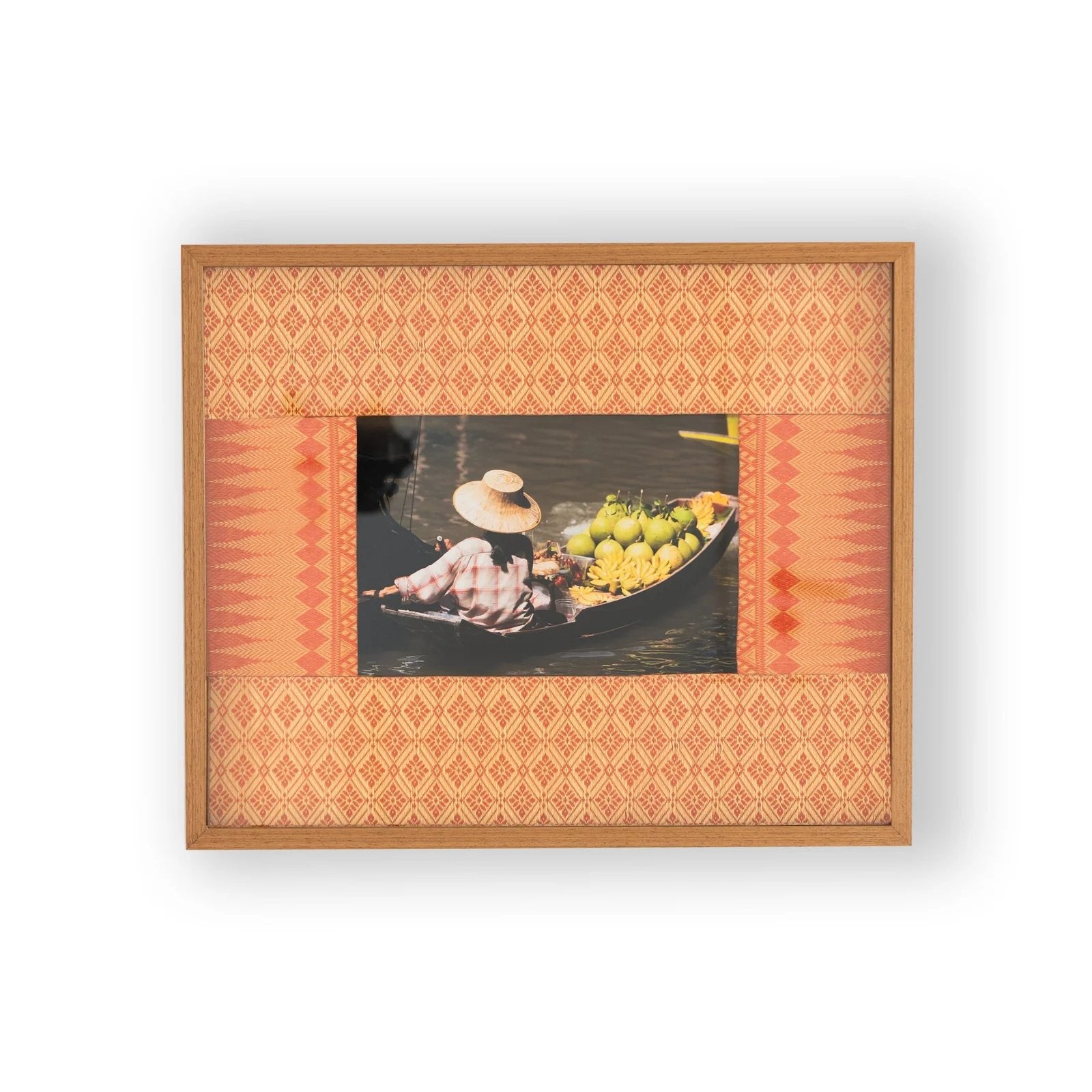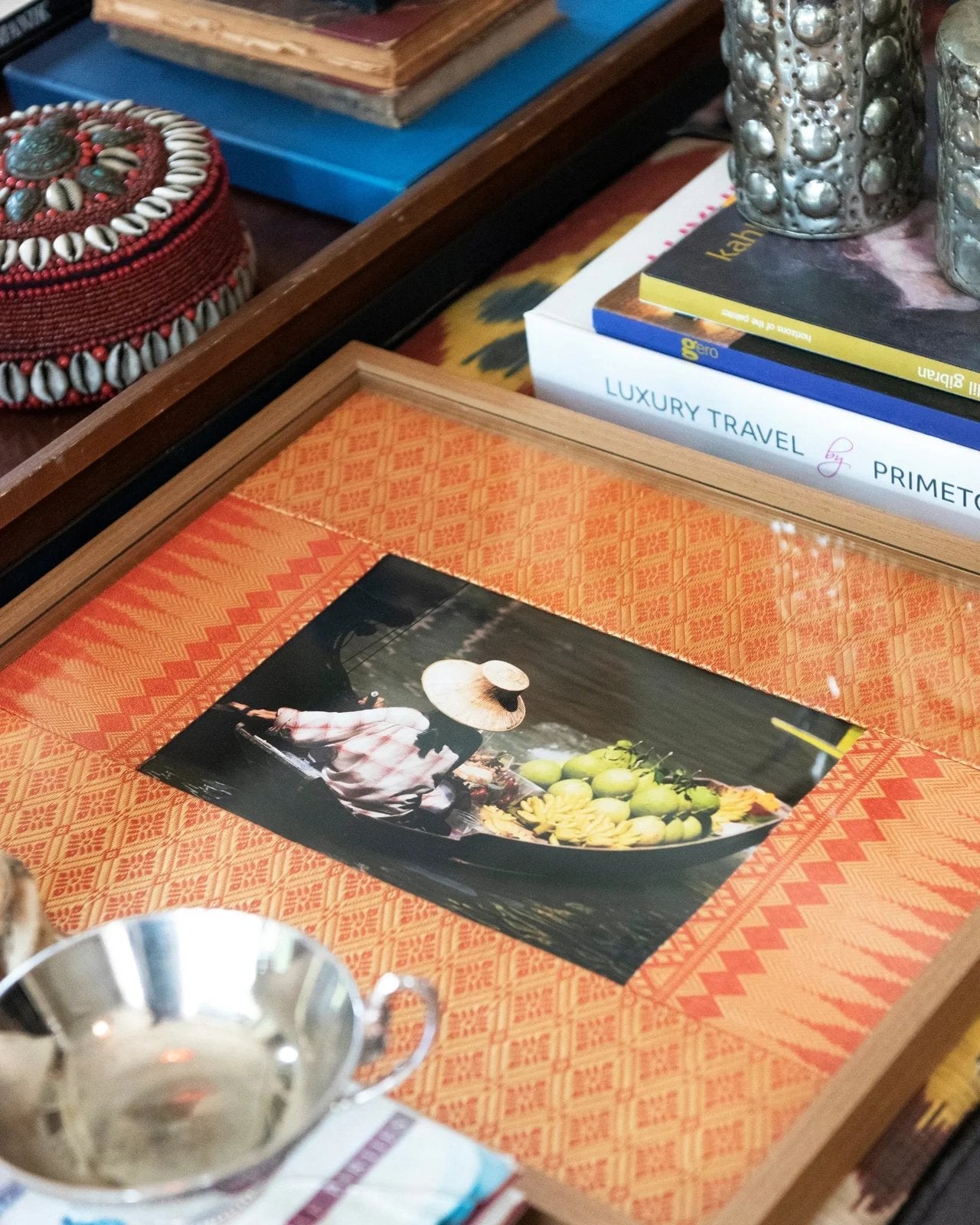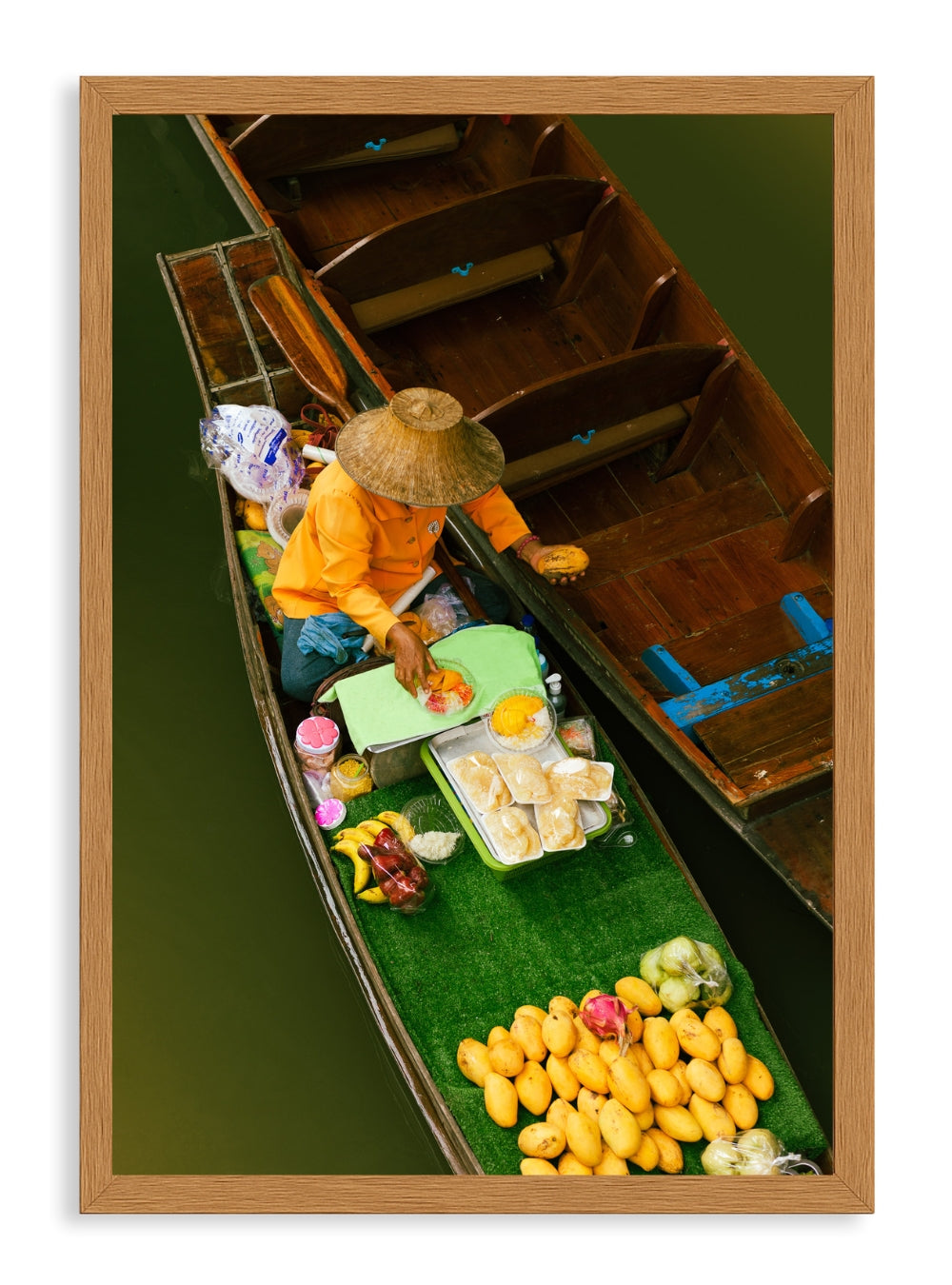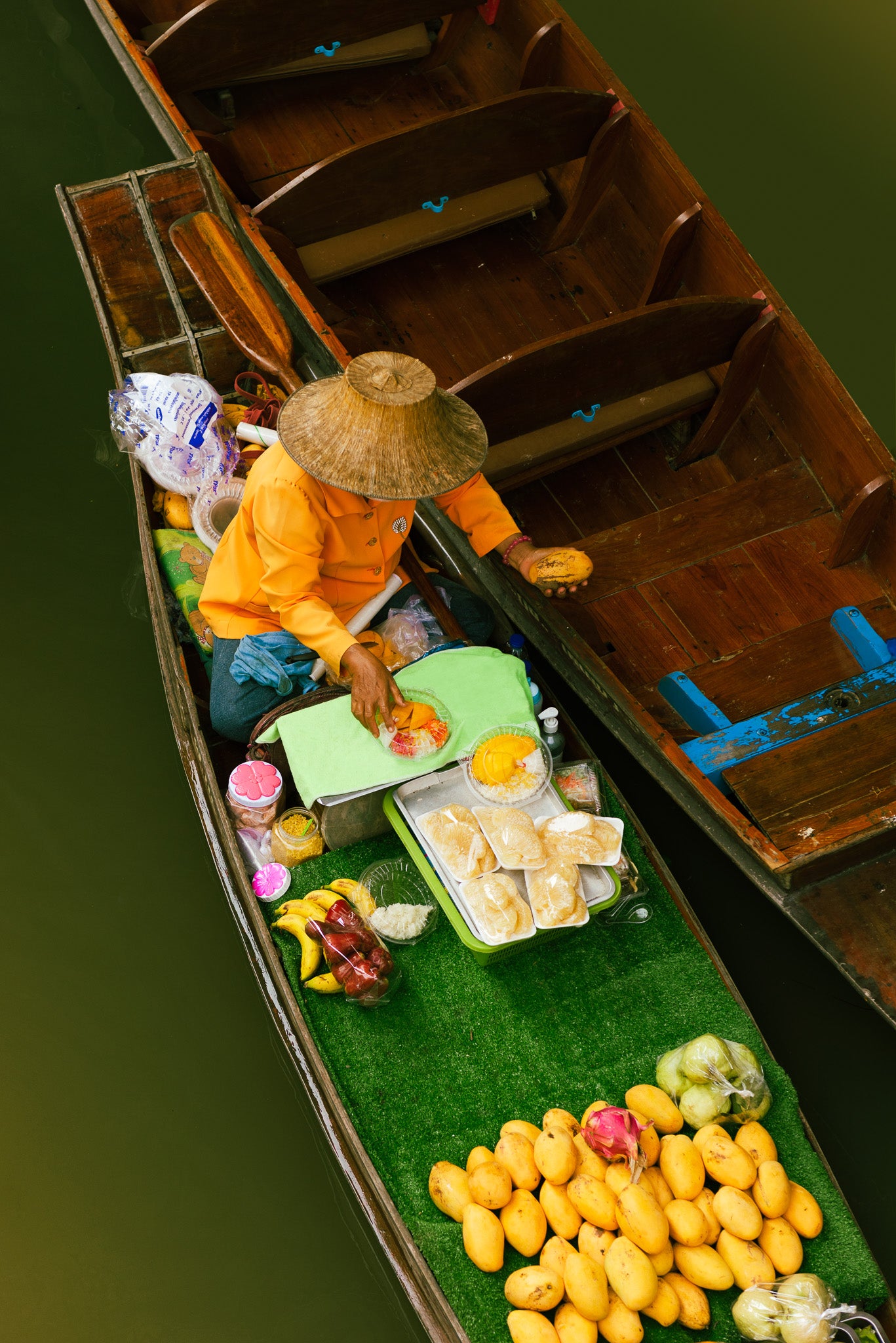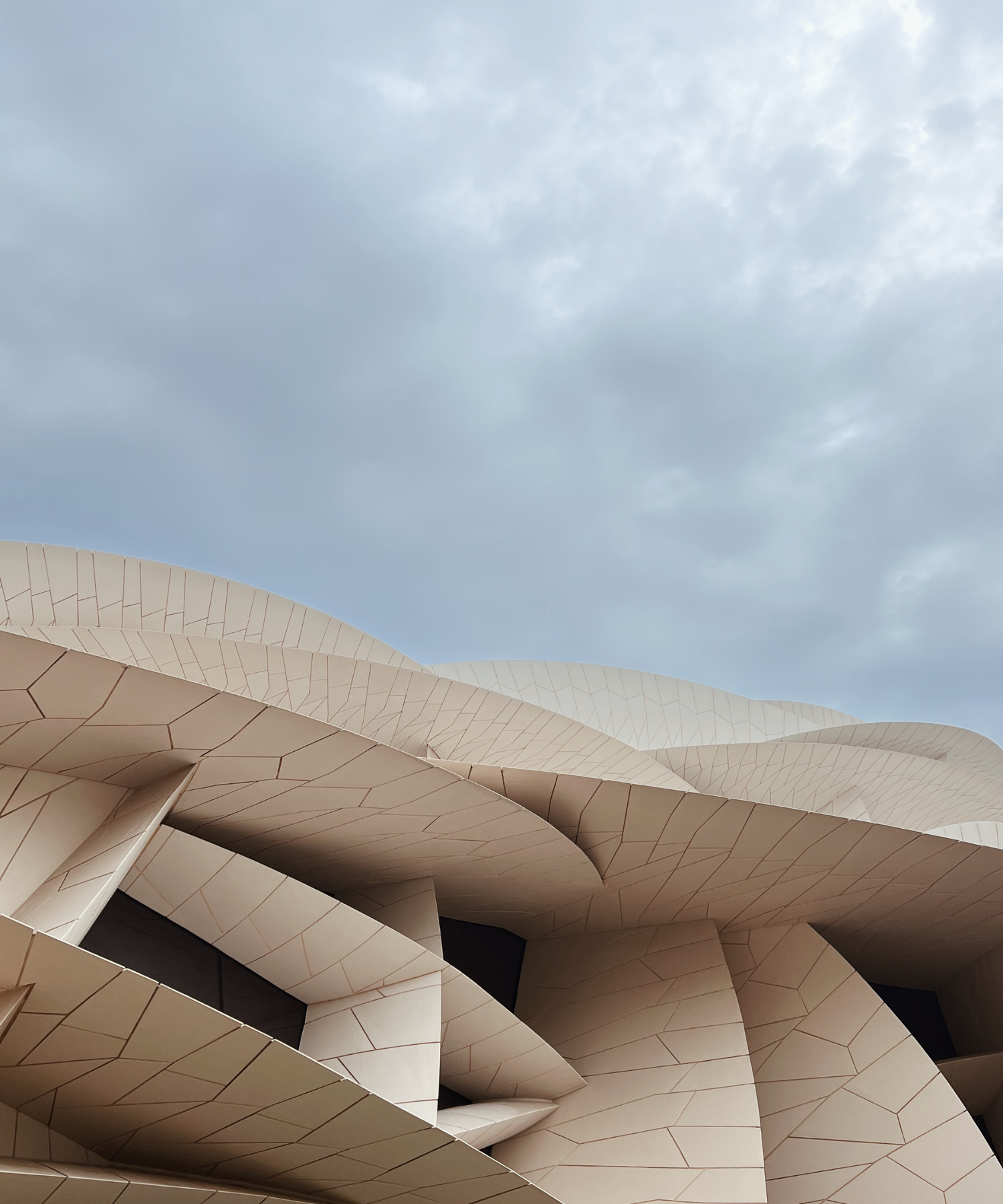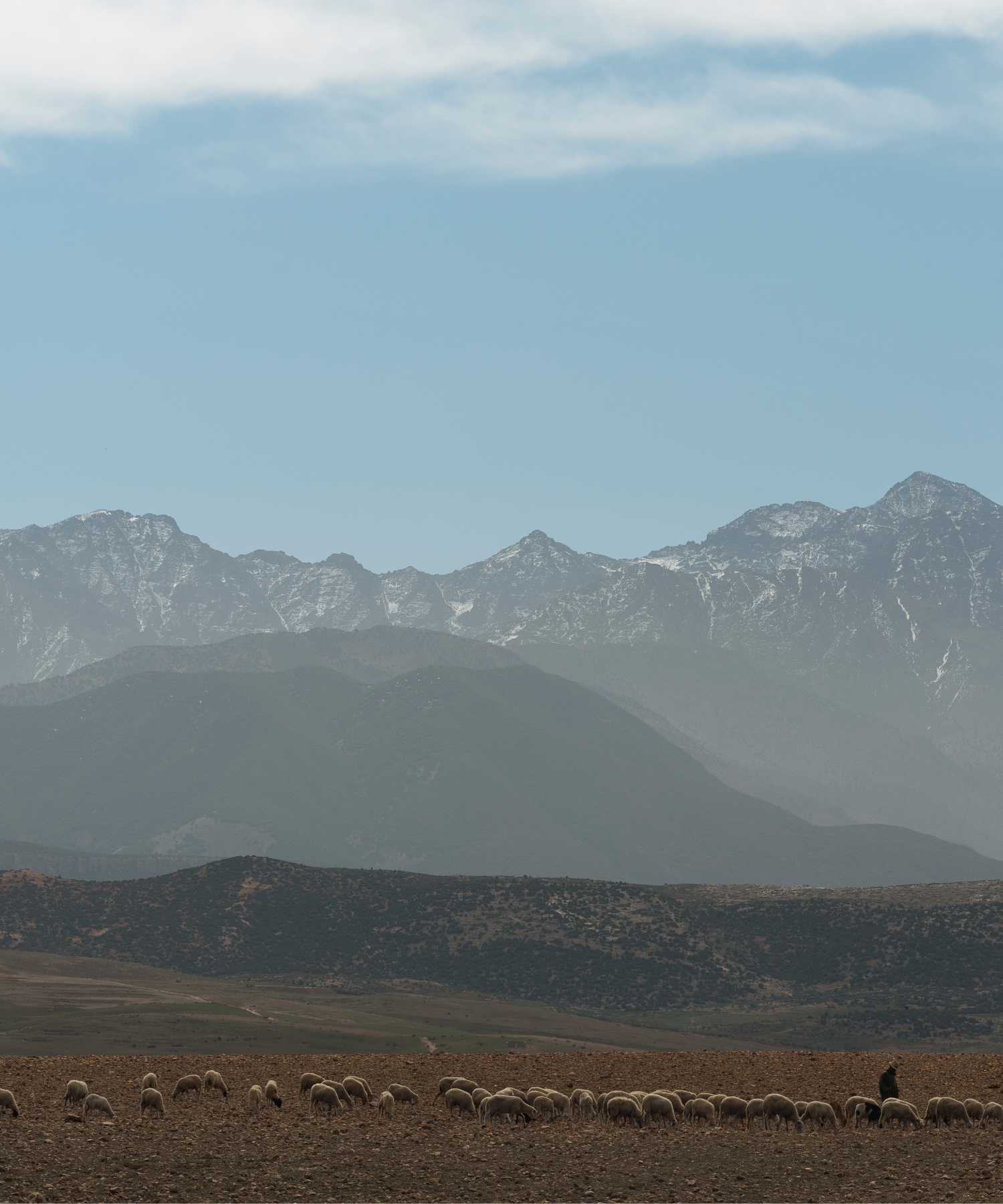We flew from Siem Reap to Bangkok , the flight lasts approximately 1:20 hours . Thailand does not require a visa for Brazilians staying up to 90 days in the country, only the presentation of the International Certificate of Vaccination (ICVP) , issued by Anvisa, which shows valid immunization against yellow fever .
Summary
Bangkok: 3 nights
Koh Yao Noi: 3 nights
1st destination
Bangkok
The hotel
We stayed for three nights at the Mandarin Oriental , Bangkok's first hotel and still, in the opinion of many, the best . Almost 150 years old , with impeccable cuisine and service, its 393 rooms were completely renovated in 2019.
I'll start with the negative point , check-in and check-out took too long, around an hour each. Other than that, our stay was wonderful from beginning to end.
Even in the first category - Deluxe Premier Room - the rooms are super spacious and comfortable , as are the bathrooms. The decoration, both in the rooms and in the hotel as a whole, mixes Eastern and Western influences , in a maximalist way, with works of art and Thai crafts .
Perfectly positioned on the banks of the Chao Phraya River, the hotel's location could hardly be better. This part of the city was recently renamed the creative district , although the entire city is a melting pot of creativity, all mixed together.
- Structure: The hotel's extensive facilities are spread out on both sides of the Chao Phraya River - the hotel's own boat will transport you to the other side - and include the wonderful Mandarin Spa , a pedicure studio by Bastien Gonzales , a 24-hour gym , a boxing studio , two outdoor swimming pools (which are located in the main body of the hotel) and beautiful tropical gardens.
- Restaurants: It takes a few days to exhaust the restaurant options within the hotel itself. There are 10 restaurants , a pâtisserie , a tea room and a bar .
With two Michelin stars and a celebrity chef, Le Normandie de Alain Roux is the hotel's flagship, serving French haute cuisine with Thai touches. Unfortunately we didn't make a reservation in advance and even though we were at the hotel we couldn't find a place to have dinner there.
Takagi's Kinu , with one Michelin star, serves omakase tasting menu in a room with just 10 seats; Baan Phraya features sophisticated Thai cuisine inside a 100-year-old traditional Thai house located across the river; the seaside Ciao Terrazza has excellent pizzas. Riverside Terrace is where, in addition to being a restaurant, there is the best hotel breakfast I've ever had; a huge buffet with several stations, offering everything from Thai noodles and Chinese dim sum to scrambled eggs and seasonal fruit.
We had lunch one day at Verandah , the hotel's international restaurant that has a great Thai menu and is open for both lunch and dinner, and I ate a wonderful Pad Thai . Every night we went to Bamboo Bar before or after dinner, number 46 on Asia's 50 Best Bars list, the historic bar opened in 1953 has live jazz, impeccable service, great drinks and maximalist decor with tiger prints, bamboo furniture and exotic climate.
- Service: The hotel's service is impeccable , most of the staff have worked there for many years and are ready to accommodate any type of request, in the most gentle way possible.
Budget your trip with
Embark With Us
All guides were created in partnership with the Embarque With Us agency , which has 40 years of experience in the market and is based in São Paulo and Ribeirão Preto - Brazil .
To quote this itinerary or have it tailored to you, simply click the button below and a travel consultant will contact you shortly.
www.embarquewithus.com.br @embarquewithus
To Go
To visit
Grand Palace/ Wat Phra Kaew/ Wat Pho
After a wonderful breakfast, we started our first day towards the Grand Palace and Wat Phra Kaew .
We left the hotel by boat on the Chao Phraya River and took a tour of the Thonburi klongs where we were able to see some of the city's architecture and small residential communities. After touring the canals, we headed to the Grand Palace.
The Grand Palace is an impressive palace , with super ornate architecture, golden columns and walls adorned with hand-painted murals, depicting epic scenes from Thai mythology and ancient stories. The Palace was the official residence of the King of Thailand between the 18th and 20th centuries, built in 1782 by King Rama I. Nowadays the palace is no longer the official residence of the king, but is still used for religious ceremonies and government officials.
Wat Phra Kaew , located within the Grand Palace complex, is a sacred temple that houses the Emerald Buddha , a sacred statue carved from deep green jade, it is the most venerated and revered Buddha statue in Thailand.
Within the Grand Palace complex is the Reclining Buddha of Wat Pho, an impressive recumbent statue measuring 46 meters long and 15 meters high. His figure is covered in gold leaf and his feet are decorated with sacred designs. To visit it, we needed to take a tuk tuk that took us to the entrance of the temple, despite it being in the same complex as the Grand Palace, the entrances are different and you need to buy another ticket for that part.
Note: To enter the temples it is necessary to cover knees and shoulders, entry with the body uncovered is not permitted.
We went in January and the heat was already unbearable , as well as humid. After the Grand Palace we were scheduled to visit Wat Arun , the Temple of Dawn, but the whole family was feeling unwell due to the weather and we decided to go ahead by boat on the Chao Phraya River and see from the outside. We went back to the hotel for lunch and spent the afternoon at the pool. I recommend leaving as early as possible for the tours, the visits are long and the heat becomes very intense .
Queen Sirikit Museum of Textiles
Before visiting the Reclining Buddha, we went to the Queen Sirikit Museum of Textiles , also within the Grand Palace complex. The museum is a cultural treasure that celebrates Thailand's rich textile history. Named after Queen Sirikit , the museum displays an impressive collection of traditional and contemporary textiles, including royal costumes, ceremonial garments and handcrafted textiles . The well-curated exhibits offer a fascinating insight into Thai weaving and embroidery techniques, as well as the cultural importance of these textiles. A must-see for anyone who loves art, fashion and the history of Thailand.
Chinatown
Chinatown in Bangkok is a vibrant and bustling area that offers an authentic, multicultural experience. Also known as Yaowarat , it is a labyrinth of narrow streets filled with shops, restaurants, markets and temples, all with a unique atmosphere where Thai and Chinese culture merge.
What to do there:
- Explore Talat Mai Market: This market is a true paradise for food lovers. With stalls brimming with delicious delicacies , from traditional Thai street food to authentic Chinese dishes, it's an unmissable dining experience .
- Walk along Yaowarat Road: This is the main street in Chinatown and is a visual and sensory festival. Explore the shops, street stalls and historic buildings while marveling at the colors and scents around you.
- Try street food: Take the opportunity to try delicious delicacies. A really cool tour that we didn't do and I really wanted to do is the Michelin Guide Street Food Tour by Tuk Tuk .
Train Market
On the second day, we woke up very early and left the hotel at 7:00 am towards the floating market , which is an hour and a half drive from Bangkok. Along the way we also stopped to visit the train market , one of the craziest places I've ever seen.
The Bangkok Train Market, also known as the Maeklong Railway Market , is an attraction that offers a unique experience to visitors. What makes this market so interesting is the fact that it is built around an active railway line .
Several times throughout the day, the train passes right through the middle of the market, meaning traders have to quickly collect their stalls and products to make way for the train. It's an impressive scene to behold, as vendors nimbly collect their wares within seconds. Once the train passes, everything returns to normal , and the market continues to thrive with a variety of products, from fresh fruits and vegetables to clothing and souvenirs.
Floating Market
The Damnoen Saduak Floating Market, located about 100 km from Bangkok, is a popular tourist destination that preserves the tradition of floating markets in Thailand.
Located along the city's canals (klongs), the market is made up of boats selling a variety of fresh produce , crafts and food.
The boats are filled with colorful fruits, fresh vegetables, exotic spices and freshly prepared typical Thai dishes. It's a feast for the senses , with vibrant aromas and colors creating a lively and bustling scene.
Vendors, dressed in traditional clothing, communicate with customers with a mix of friendliness and enthusiasm, making the experience even more engaging. Visitors have the opportunity to negotiate prices and try authentic local dishes.
Jim Thompson House
Jim Thompson was an American businessman and art collector who fell in love with Thai culture during his stay in Thailand after World War II. He is known for revitalizing the Thai silk industry and spreading it to the West. Additionally, Jim Thompson was an Asian art enthusiast and built an impressive collection of artifacts and antiques.
He mysteriously disappeared in 1967 during a trip to Malaysia and the cause of his disappearance remains unanswered to this day.
Visiting JT's house in Bangkok was a long-time dream, it is a historic residence with a mix of traditional Thai architecture and Western style, with carved dark wooden structures and lush gardens. The interior is decorated with pieces of Asian art, antiques and an extensive collection of Thai silks, reflecting Thompson's love of local culture and crafts.
This and the Queen Sirikit museum were my favorite things to do in Bangkok. Unmissable for those who love fashion and decoration .
To Eat
Bars and restaurants
- Nahm:
- Raan Jay Fai
- Mrs Bua by Kiin Kiin
- Zuma
- Suhring
- Baan PhadThai
- Le Normandie
- Thip Samai Pad Thai
- Verandah
- Sky Bar
To Buy
mall
Bangkok has a lot of shopping malls, but the prices are not attractive compared to the United States and Europe, besides, what I think is coolest are the local ethnic products sold in Asian countries and not the big European brands that we see everywhere.
We ended up going to two shopping malls in Bangkok, on our first night, we had dinner at the hotel and then we went to see Icon Siam which is opposite the Mandarin , on the opposite side of the river and on our last day, returning to the hotel after visiting the house by Jim Thompson , we stopped at Siam Paragon to check it out.
Both are huge and have lots of good stores. Siam Paragon has a really cool food court, with many Thai restaurants and street food carts. I found it very interesting to try the food and see what local consumption and retail is like.
- Siam Paragon
- Icon Siam
2nd destination
Koh Yao Noi
Our second destination in Thailand and the last of the trip was the island of Koh Yao Noi, located between Krabi and Phuket and very close to Koh Phi Phi .
To get there we flew from Bangkok to Phuket in a flight of approximately 01:30 hrs . Arriving at Phuket international airport, a representative from Six Senses Yao Noi was waiting for us at arrivals to take us to the 30-minute transfer to Ao Po Grand Marina. There, we took a speedboat that took us to the hotel. The boat trip itself is a beautiful ride and lasts 45 minutes .
The hotel
- Structure: Located on Koh Yao Noi, a quiet island halfway between Krabi and Phuket in the middle of Phang Nga Bay. Facing east, the resort sprawls across a jungle-covered hillside overlooking a cluster of limestone rock formations – it's worth setting your alarm for 6am at least one morning to see the sun rising behind them.
The hotel 's style is the epitome of barefoot luxury , colorful butterflies and tropical birds flit through the lush native rainforest . Stone paths wind through the vegetation leading guests to rustic-chic restaurants, organic vegetable gardens and even a chicken coop.
Each guest stays in their own villa , with a private pool, sun chairs and an outdoor balcony. The room, all made of wood and thatched roof, has a four-poster bed, colorful orange and green sofas, a bathtub with a view, indoor and outdoor showers, a desk and a closet. In the first category, the one we stayed in, the villas have views of the forest, but there are rooms with breathtaking views of the bay, as well as superior categories with villas with more than one floor and up to 5 bedrooms. Furthermore, everything in the room can be personalized according to the guest's taste. At check-in we received a form to fill out with our preferences, which ranged from room fragrances to a pillow menu , among other things such as a sleeping mask, etc.
The best part of the hotel is undoubtedly the infinity pool located on the hilltop , getting there and seeing the view was exciting. There is also a private beach for guests where, in addition to sunbathing, it is possible to rent stand-up paddle boards, kayaks and windsurf boards.
The hotel also has a gym and free daily yoga classes, as well as the best spa in the region with an extensive list of treatments.
Twice a week, they organize a cinema under the stars with films for the whole family, as well as other complementary programs such as painting Batiks , a local fabric.
- Programming: In addition to those mentioned above, the hotel also offers a series of complementary activities, water skiing and wakeboarding classes, Muay Thai classes, snorkeling, mountain bike trails and some boat tour options. These tours can be done on a longtail , traditional Thai boat or speedboat, depending on the itinerary chosen and the number of people. We took a day trip on a speedboat around the Phi Phi islands and surrounding areas and it was wonderful , an unforgettable day. The rest of the days, we enjoyed the hotel, but I would have also taken the trip to James Bond Island on a longtail if we had stayed another day.
- Service: Impeccable as in all Six Senses. Each villa has its own GEM (guest experience manager) , he came to our table every day for breakfast and dinner, as well as stopping by the pool in the middle of the afternoon or wherever we were, to see if there was anything we would like to schedule to do it at the hotel.
- Restaurants: The hotel has 4 restaurants in addition to the possibility of planning a private meal within your own villa, from breakfast to picnic and dinner under the stars . Meals at any of the restaurants, as well as tours, must be booked with GEM.
The Den - Asian and Western tapas and great drinks in a beautiful, relaxed atmosphere.
The Hilltop - Contemporary Western, opens at lunch with a lighter and informal menu that can be served by the pool, or at dinner with more elaborate dishes at a table overlooking Phang Nga Bay.
Living Room - With a wonderful breakfast buffet with eastern and western options; Relaxed lunch or dinner with a choice of dishes cooked on the grill or wok. There is also a pâtisserie and a Deli, open all day .
Dining Room - Traditional Thai cuisine.
- Sustainability: I couldn't end this post without mentioning Six Senses' commitment to sustainability . The hotel chain was founded in 1995 with the mission of promoting responsible practices in the high-end hospitality sector, with innovative developments that highlight the natural beauty of its locations.
Six Senses Yao Noi has a farm to table premise, everything is produced locally organically, and arrives at the table fresh and with the best quality .
Furthermore, there is the Environmental and Social Sustainability Policy focused on energy efficiency , water and waste management, social commitment, protection of the natural environment, air quality and noise control.

